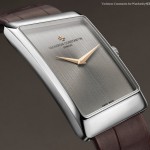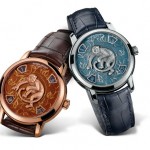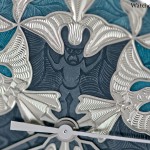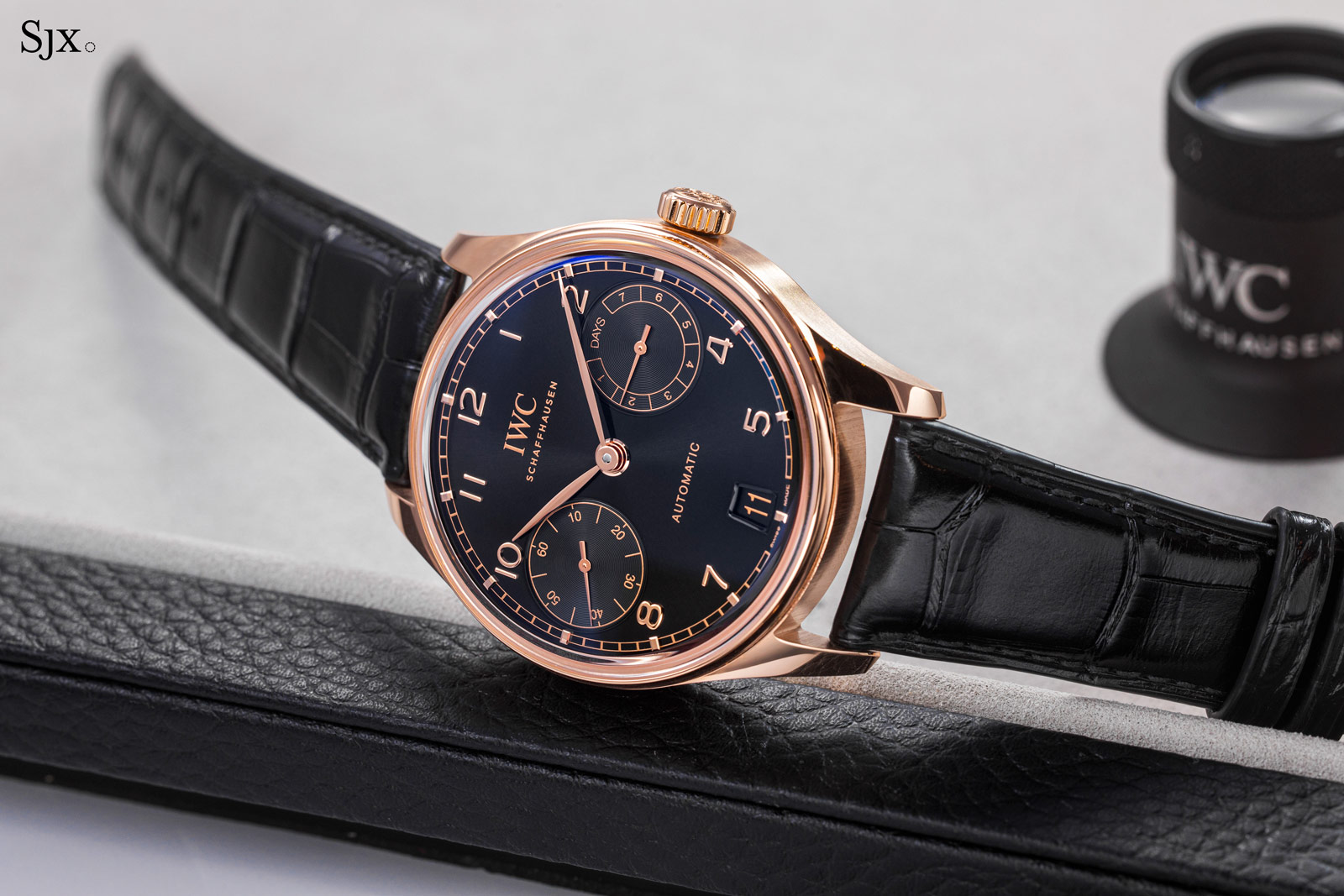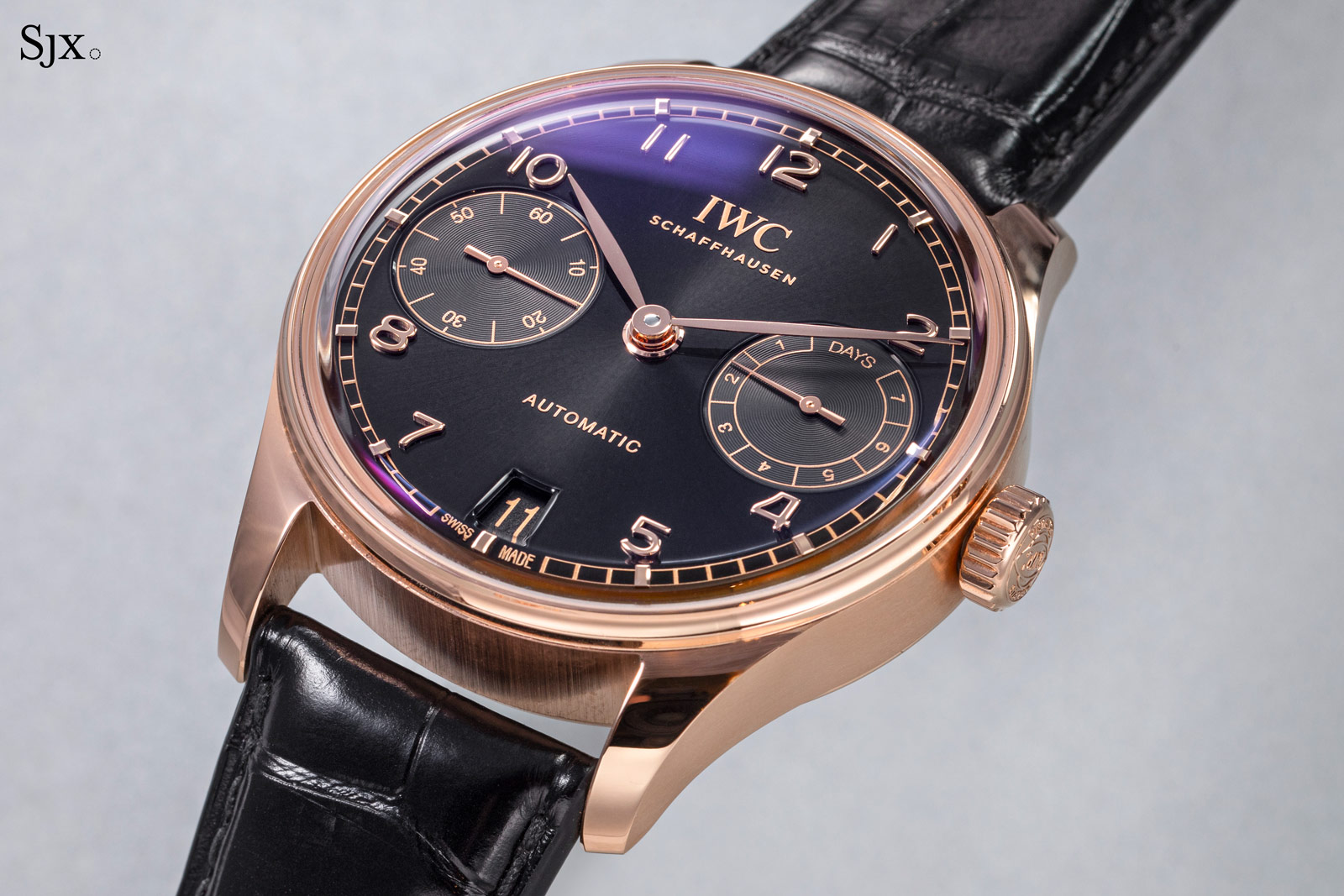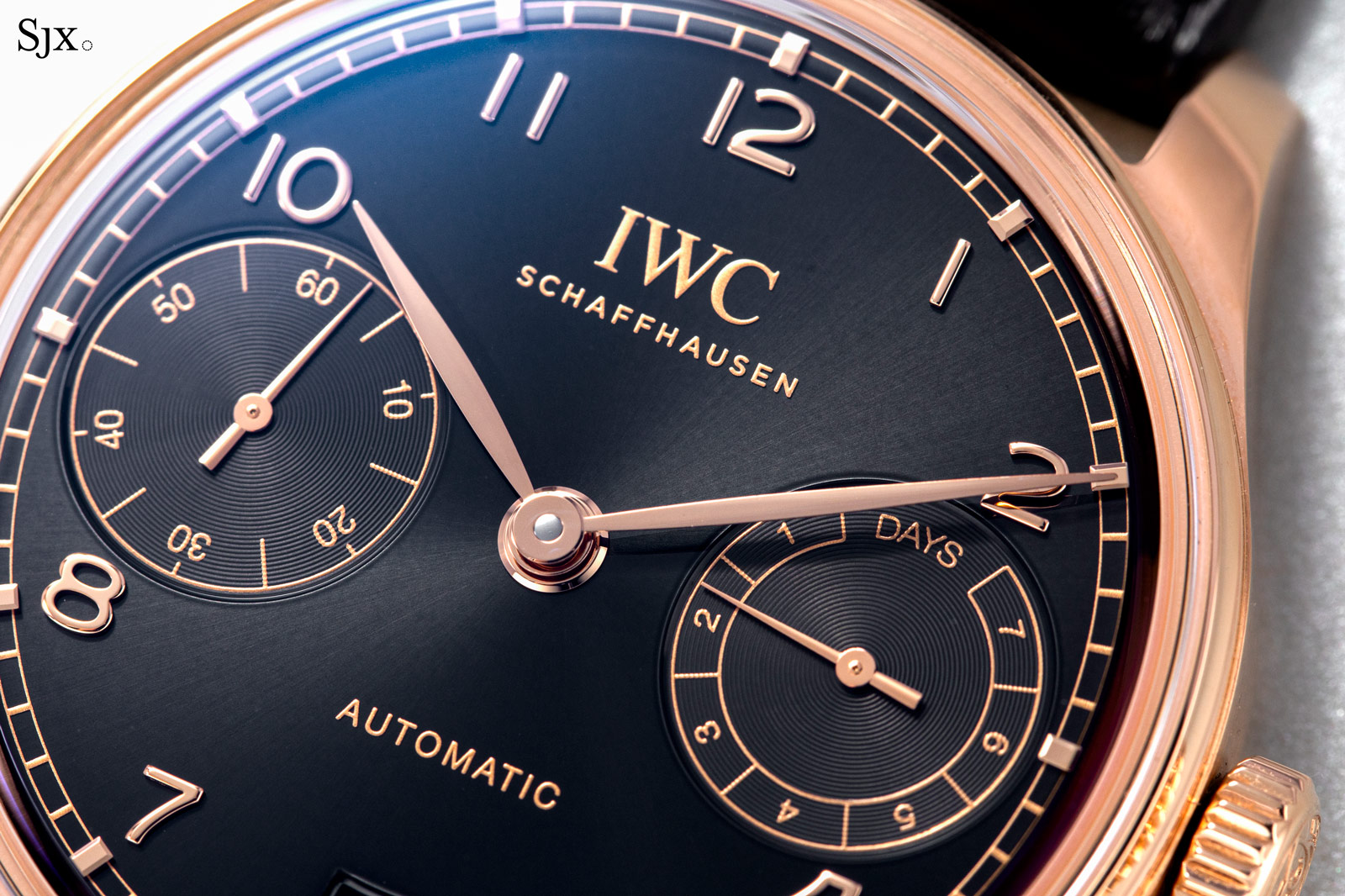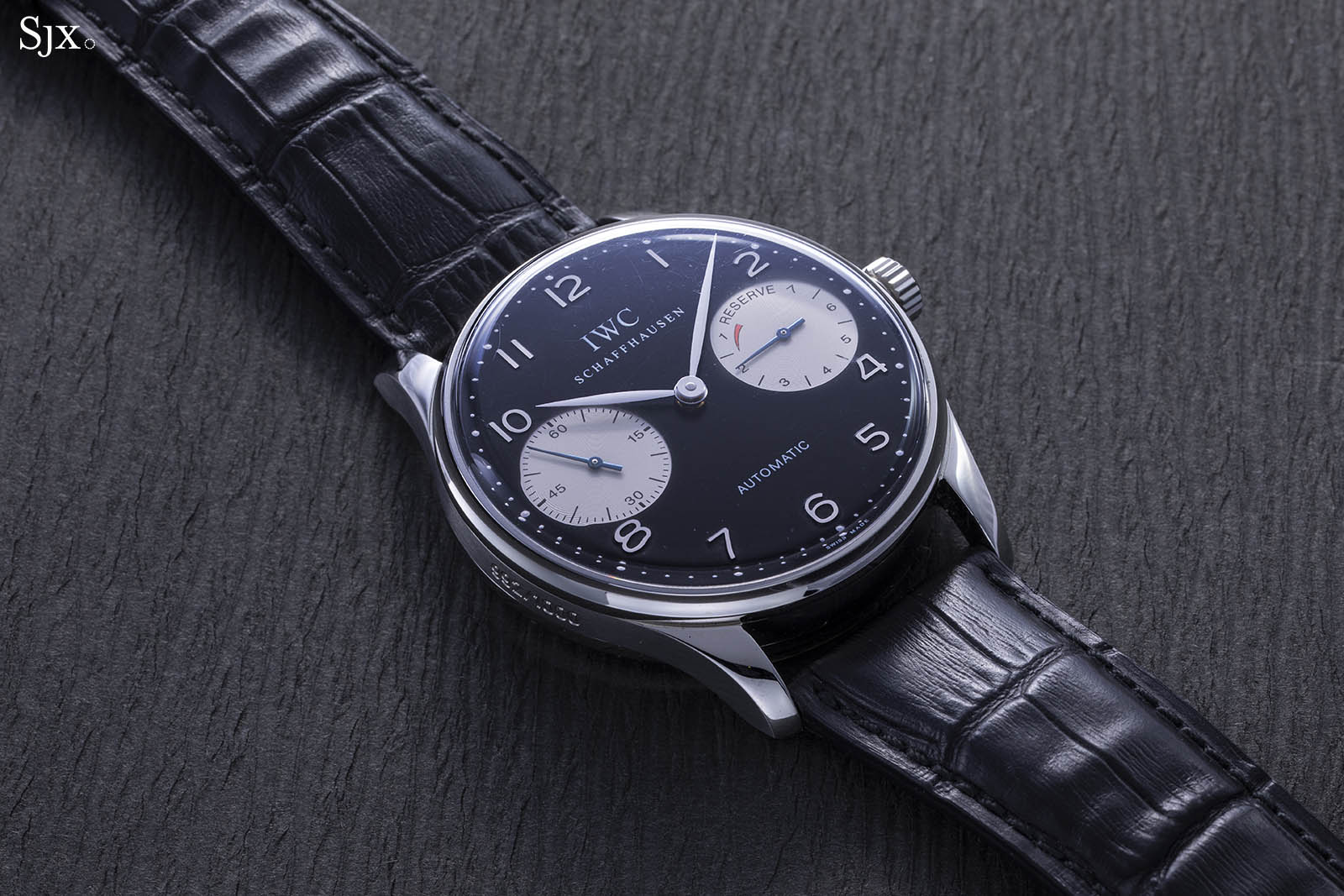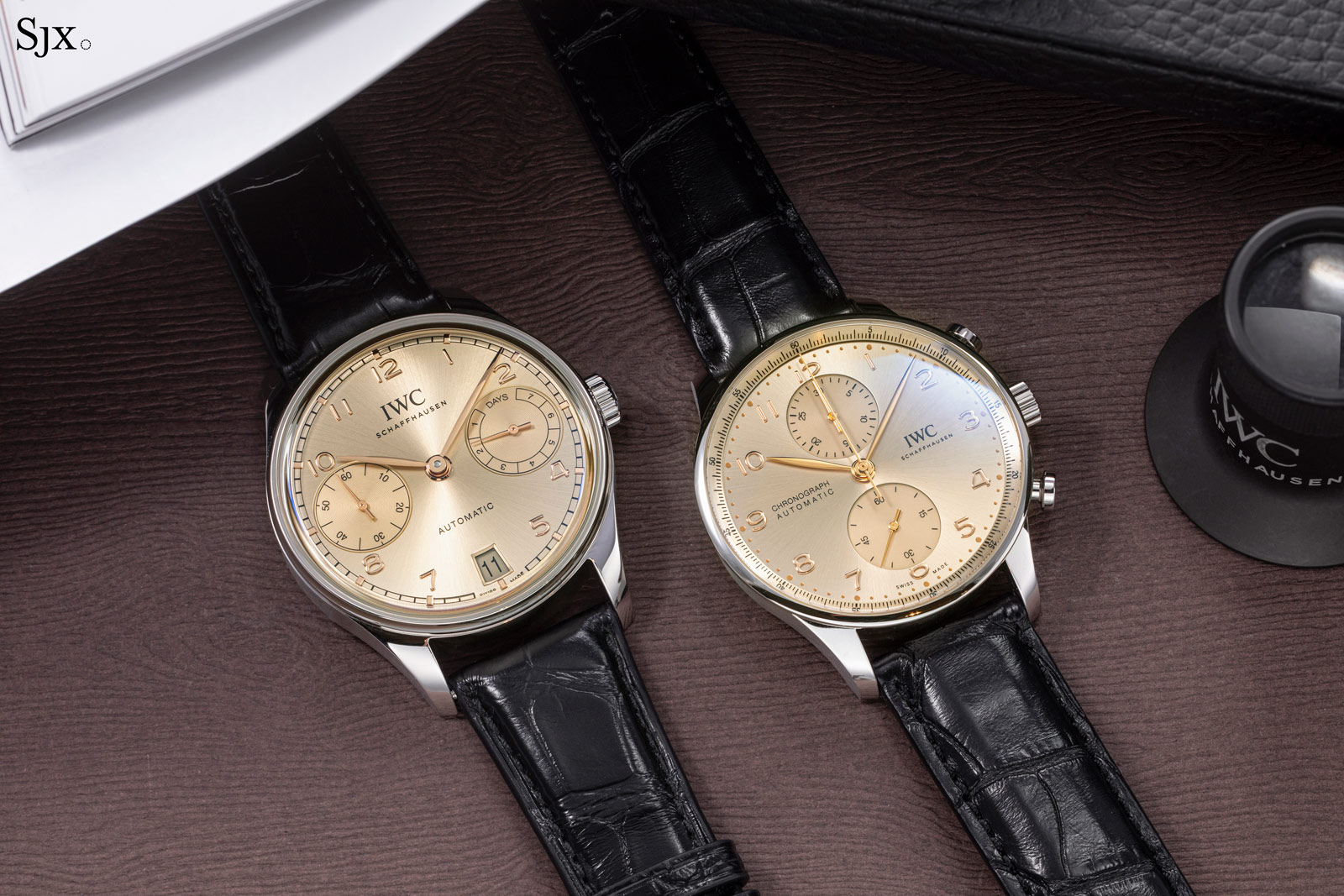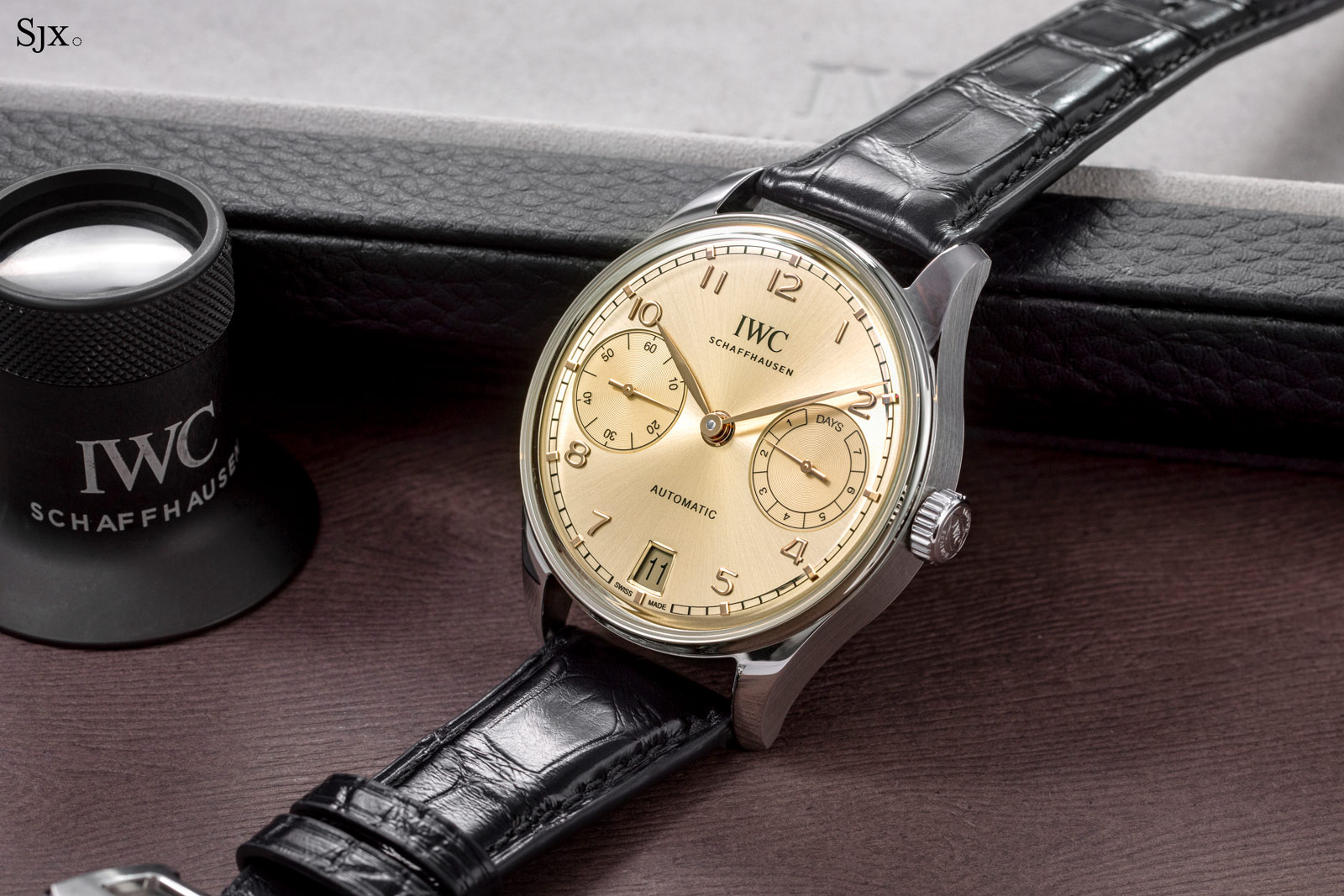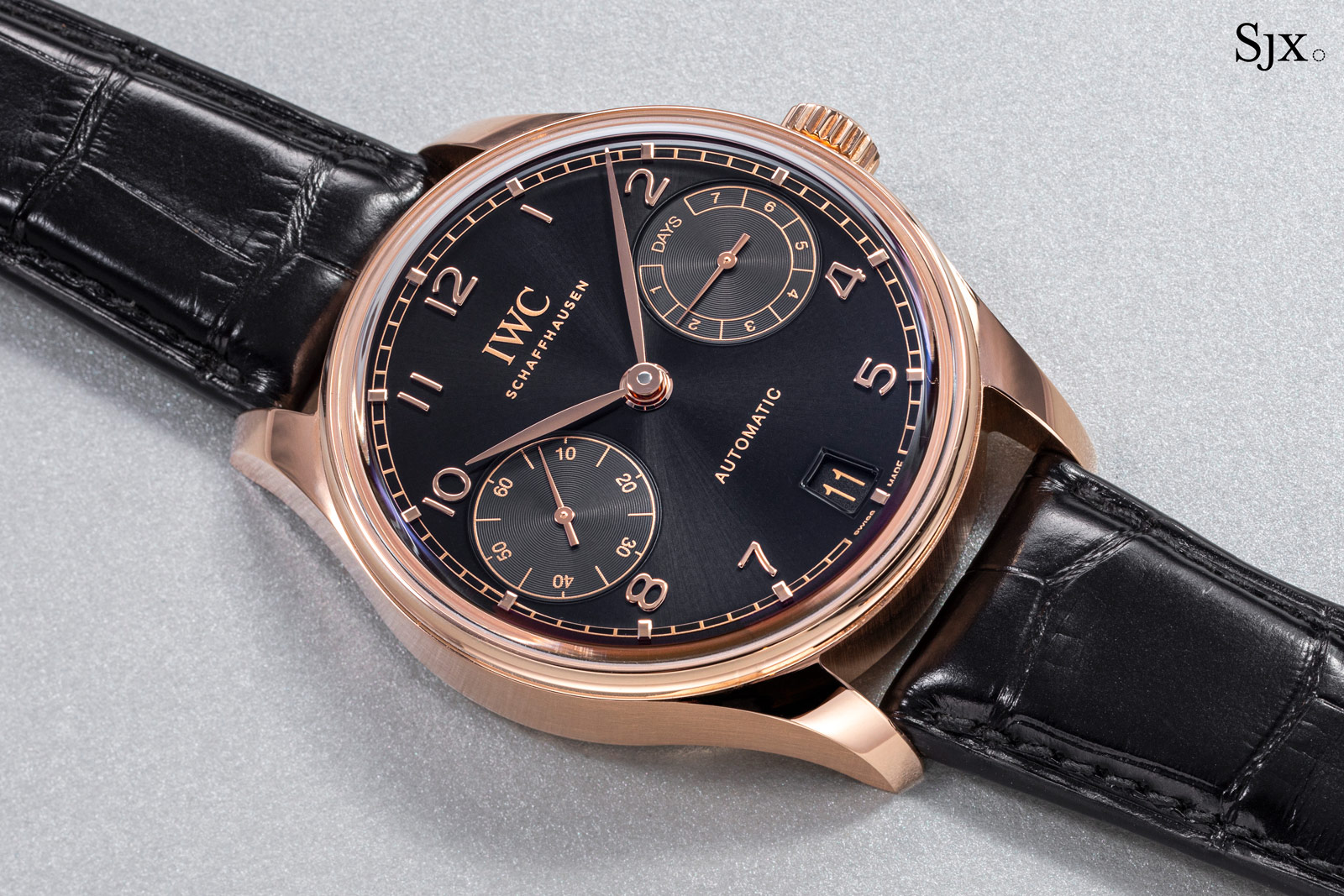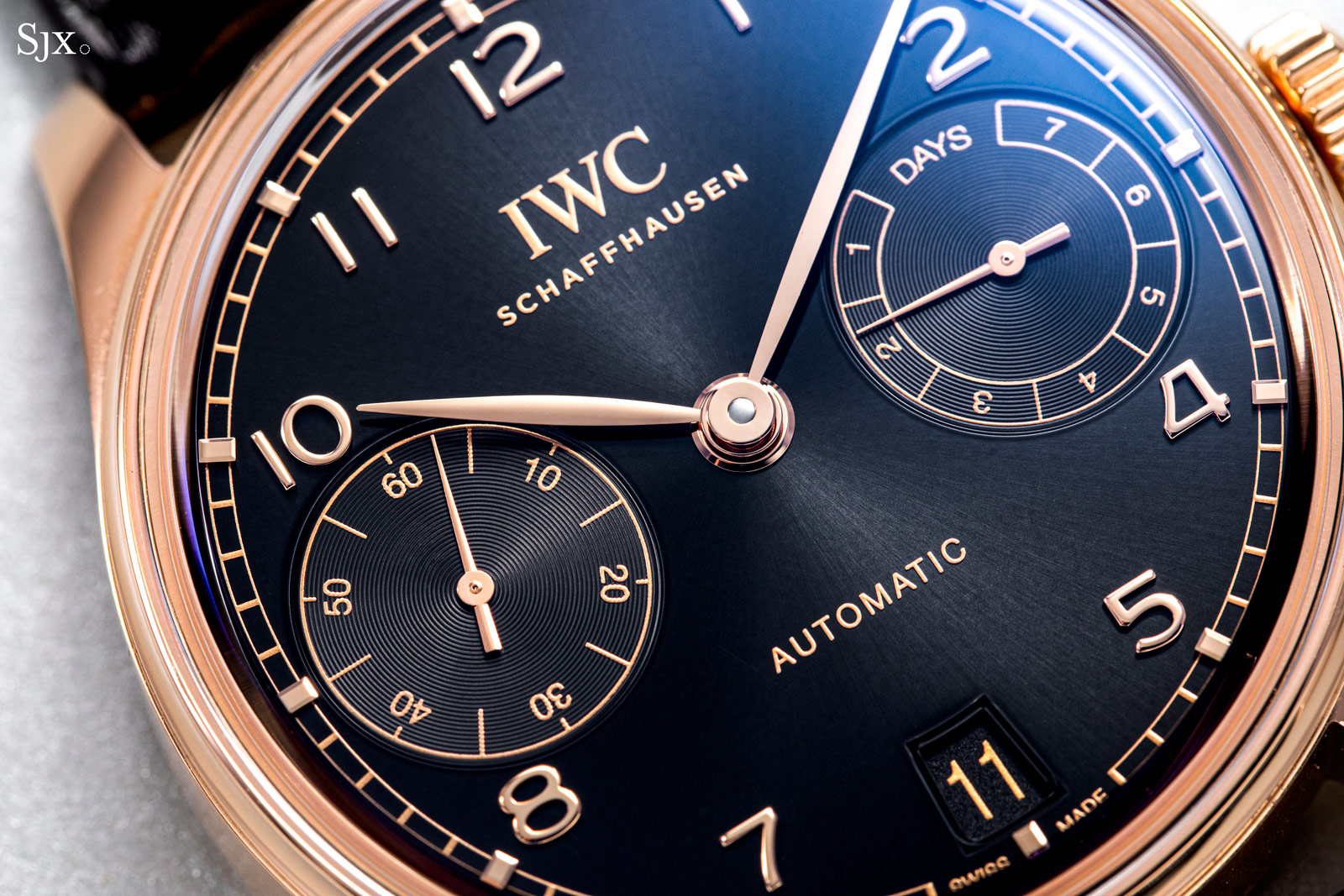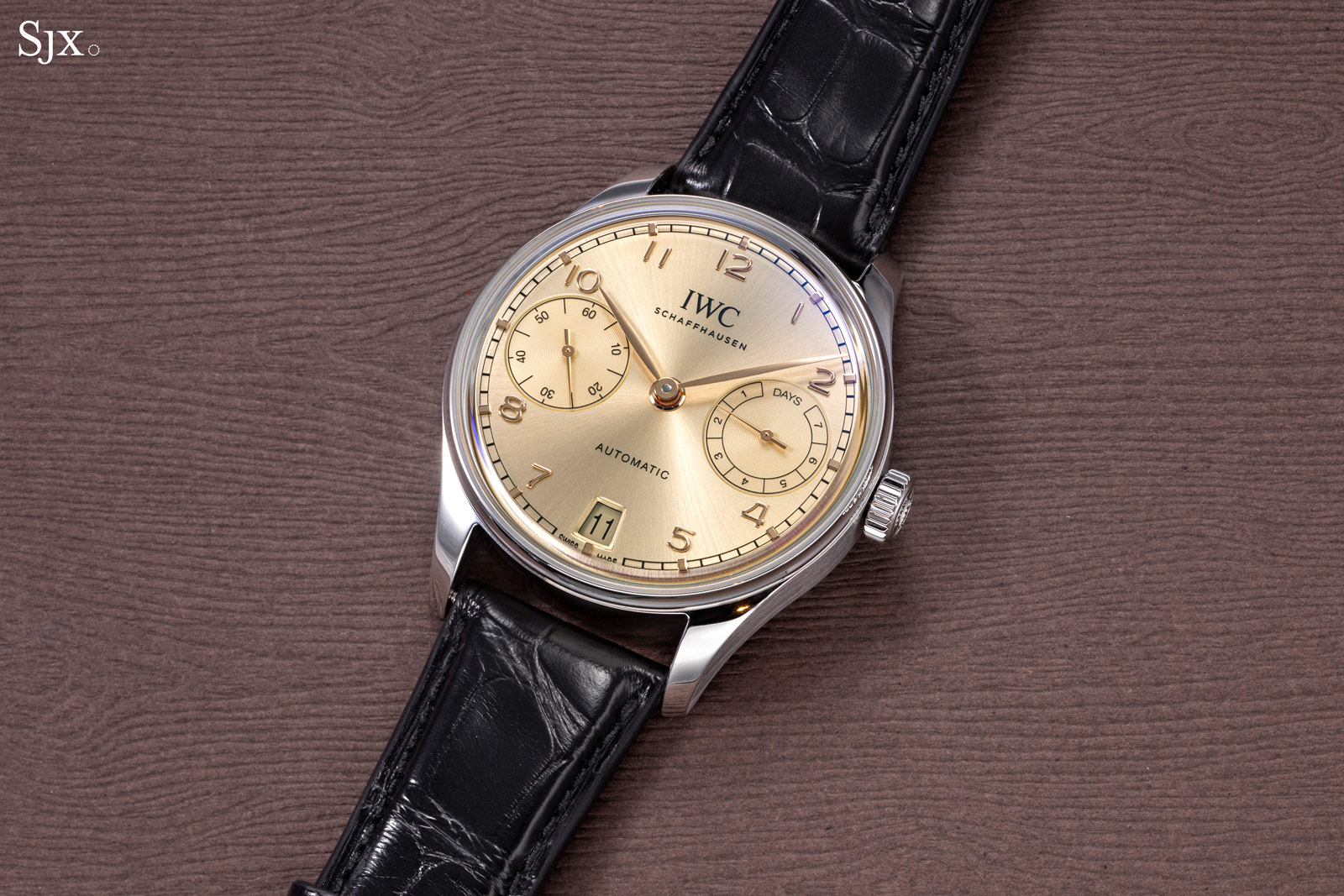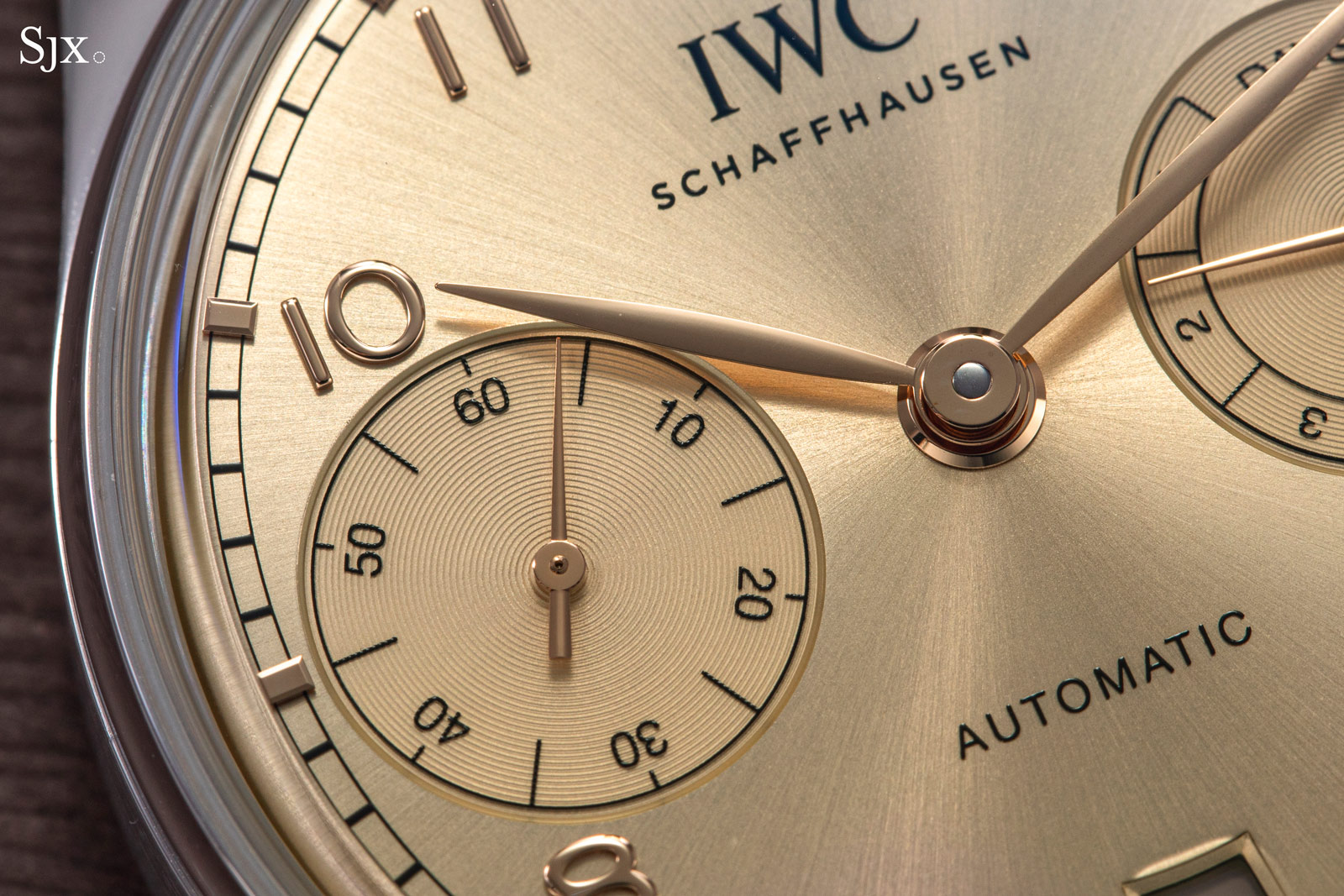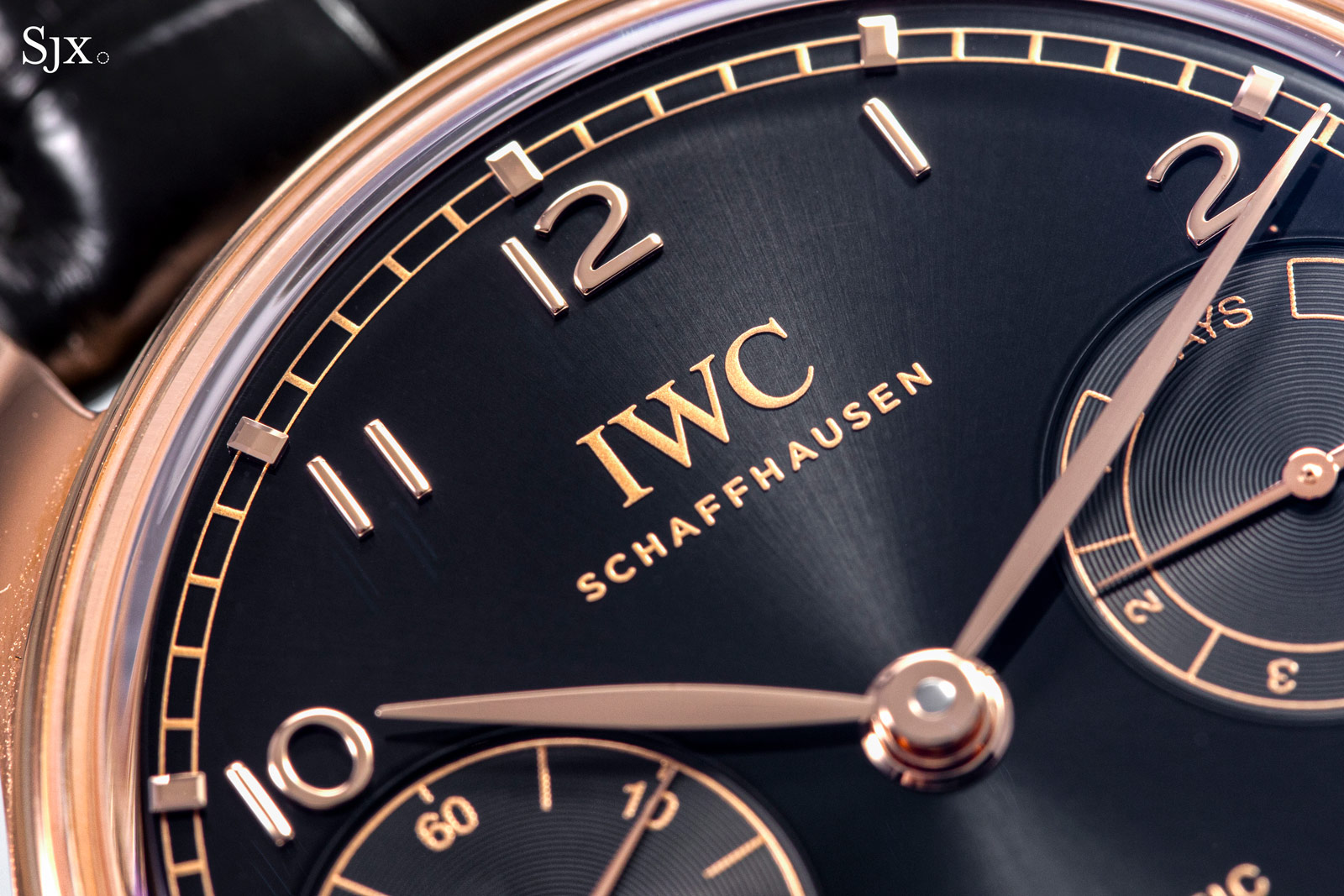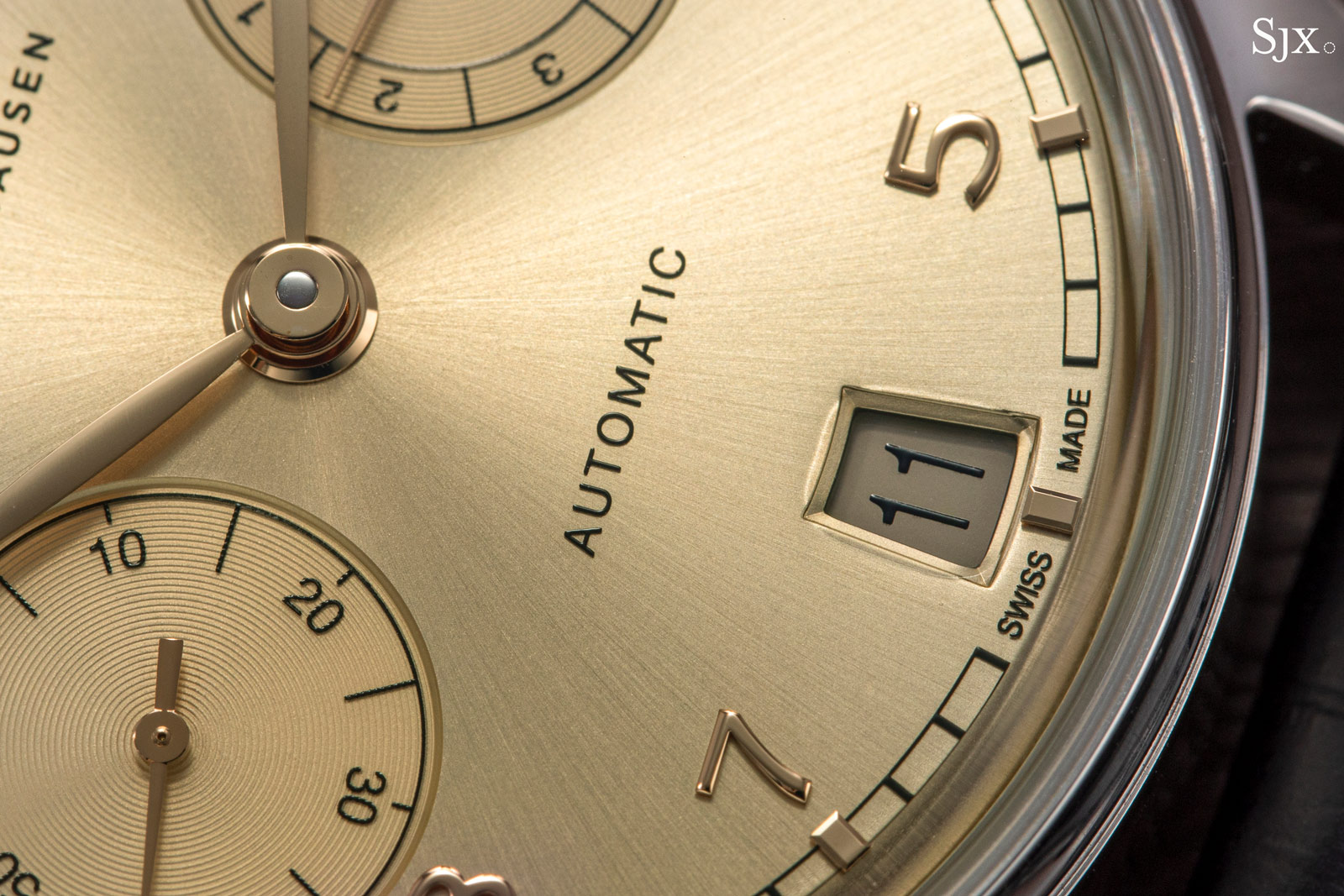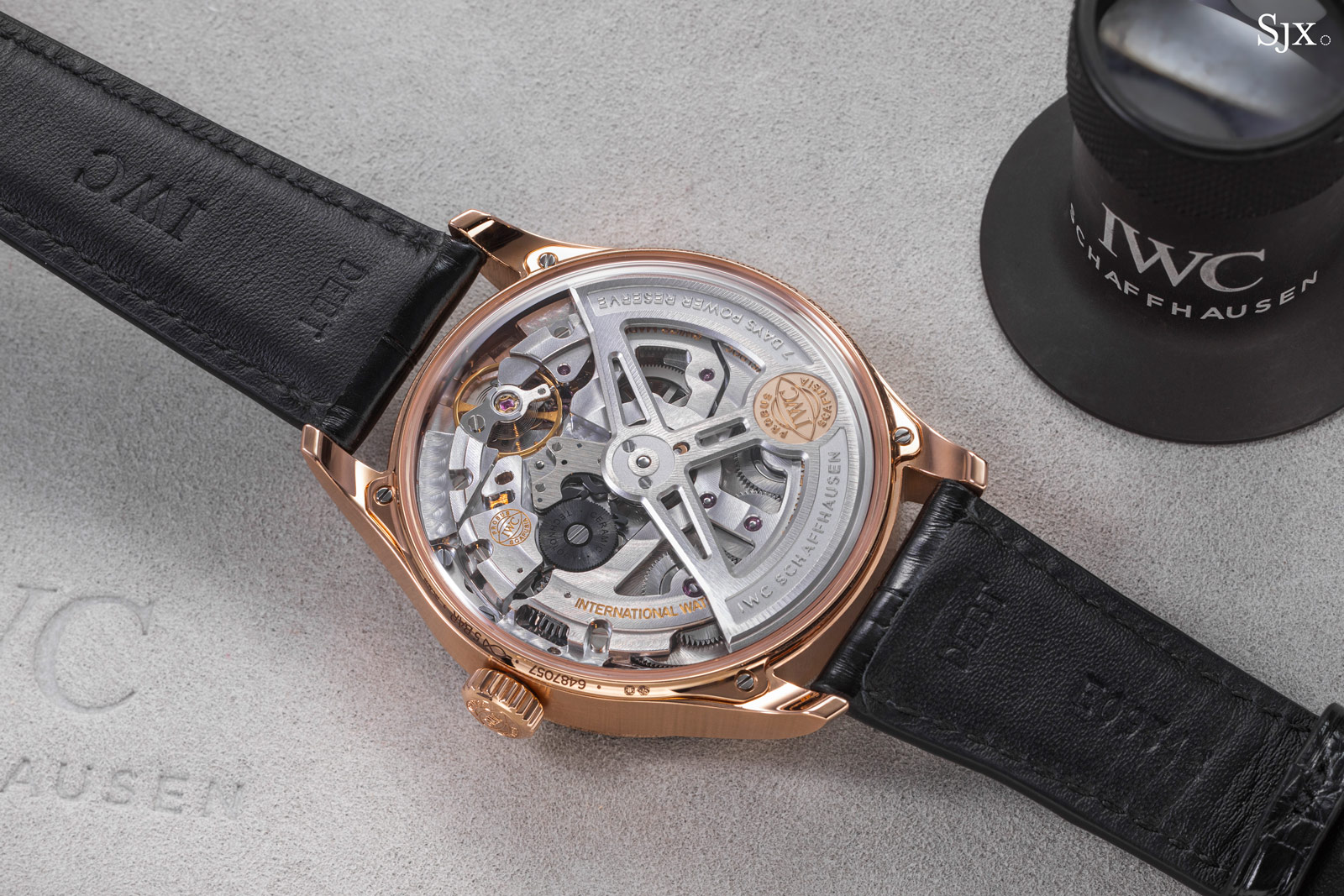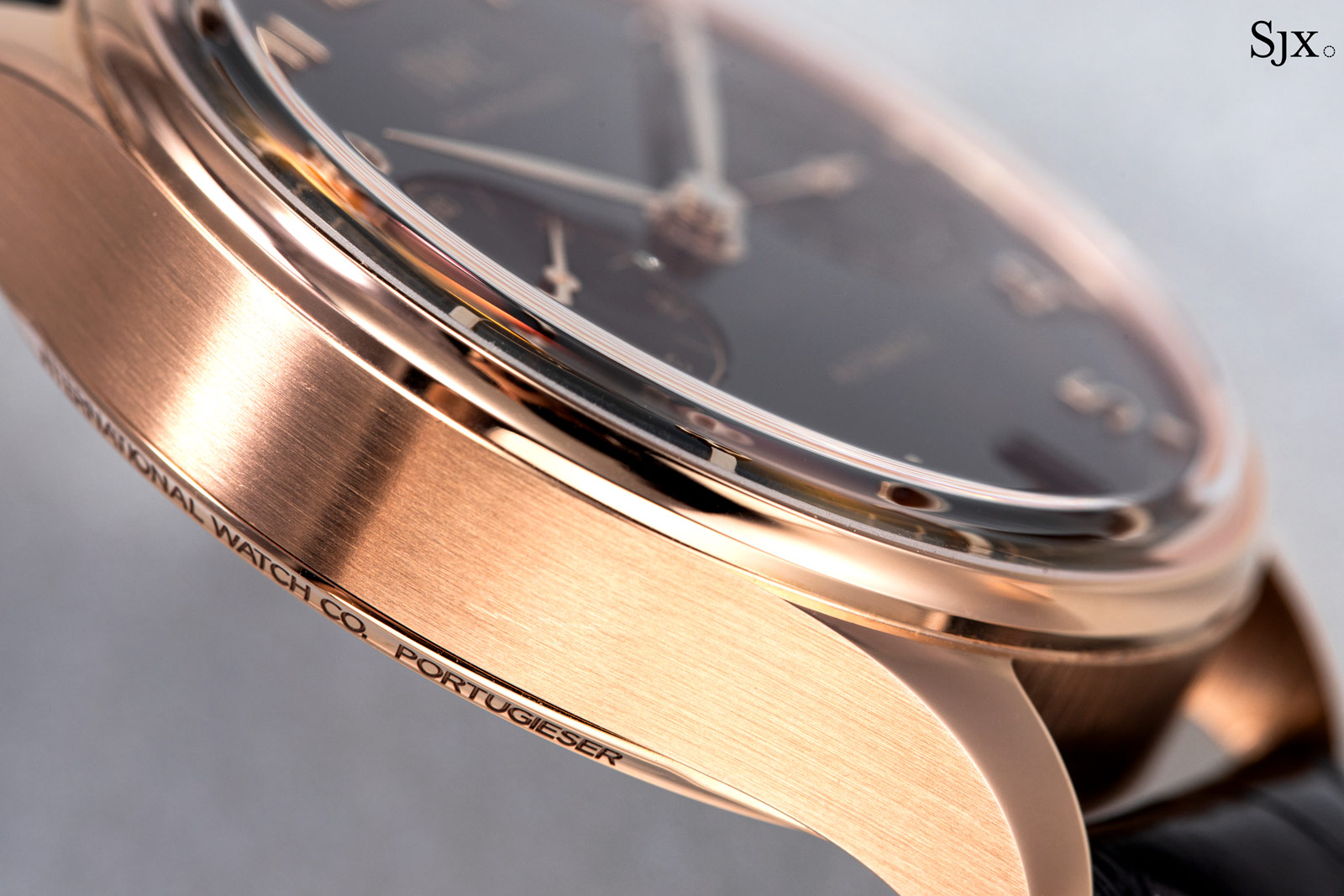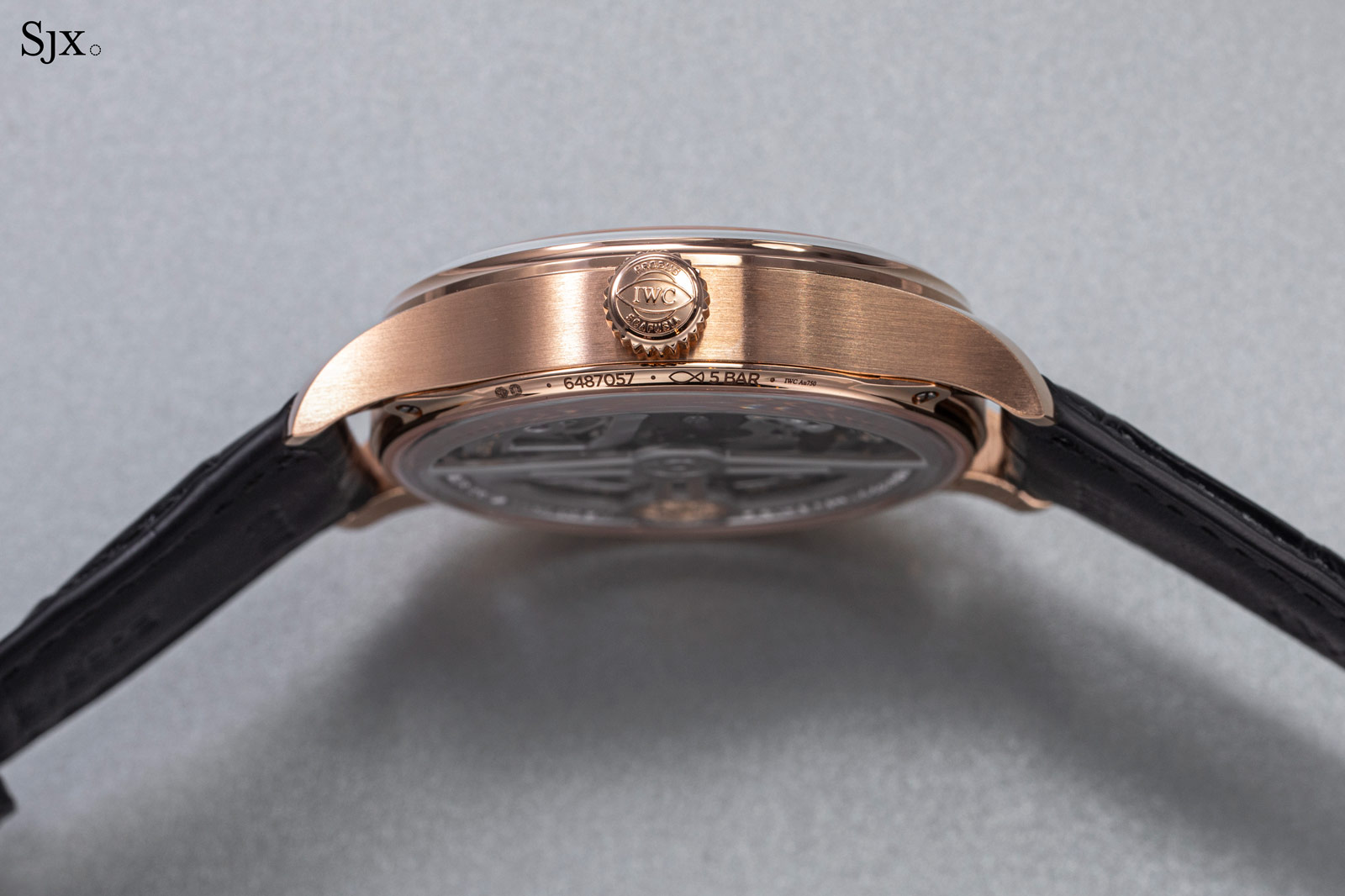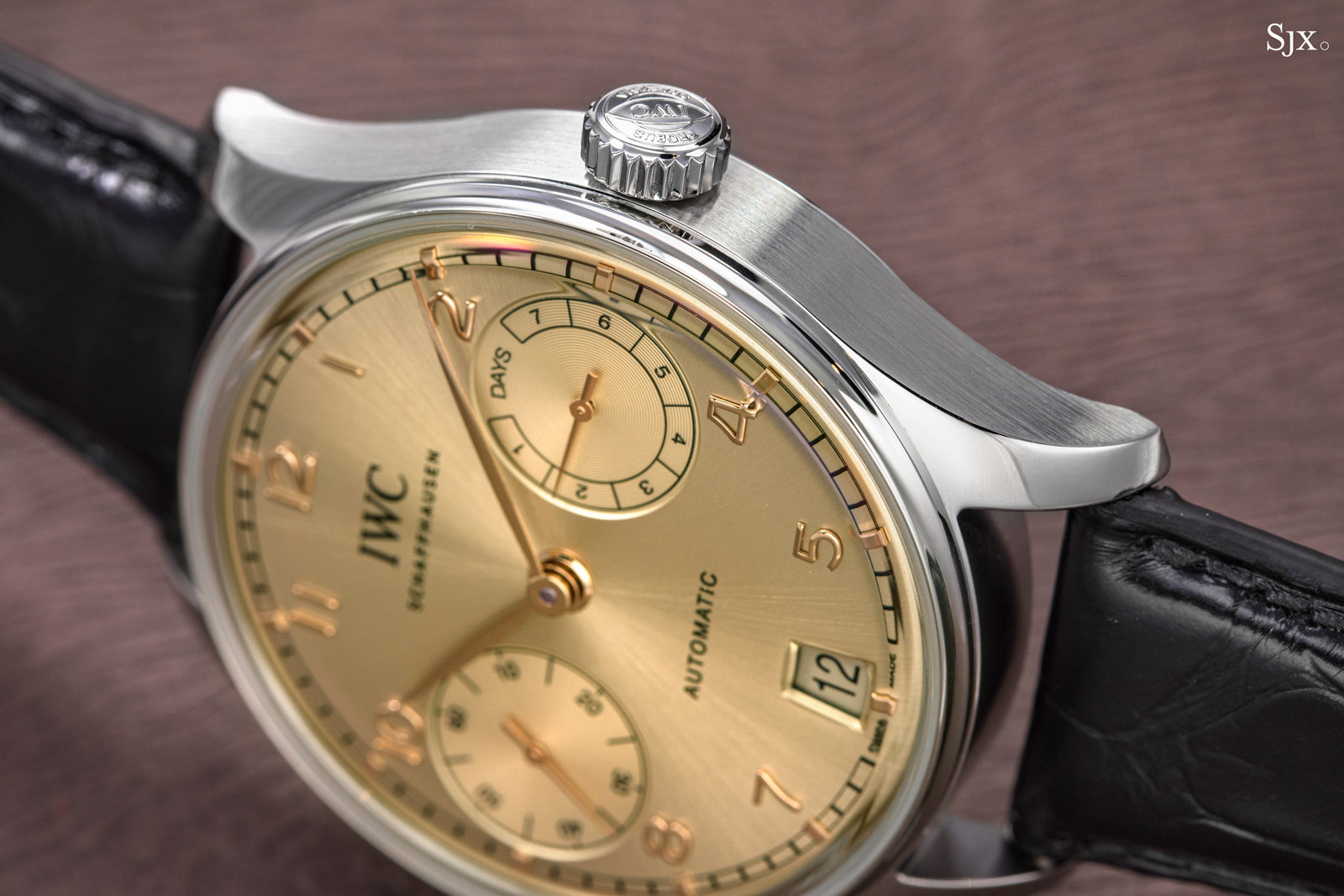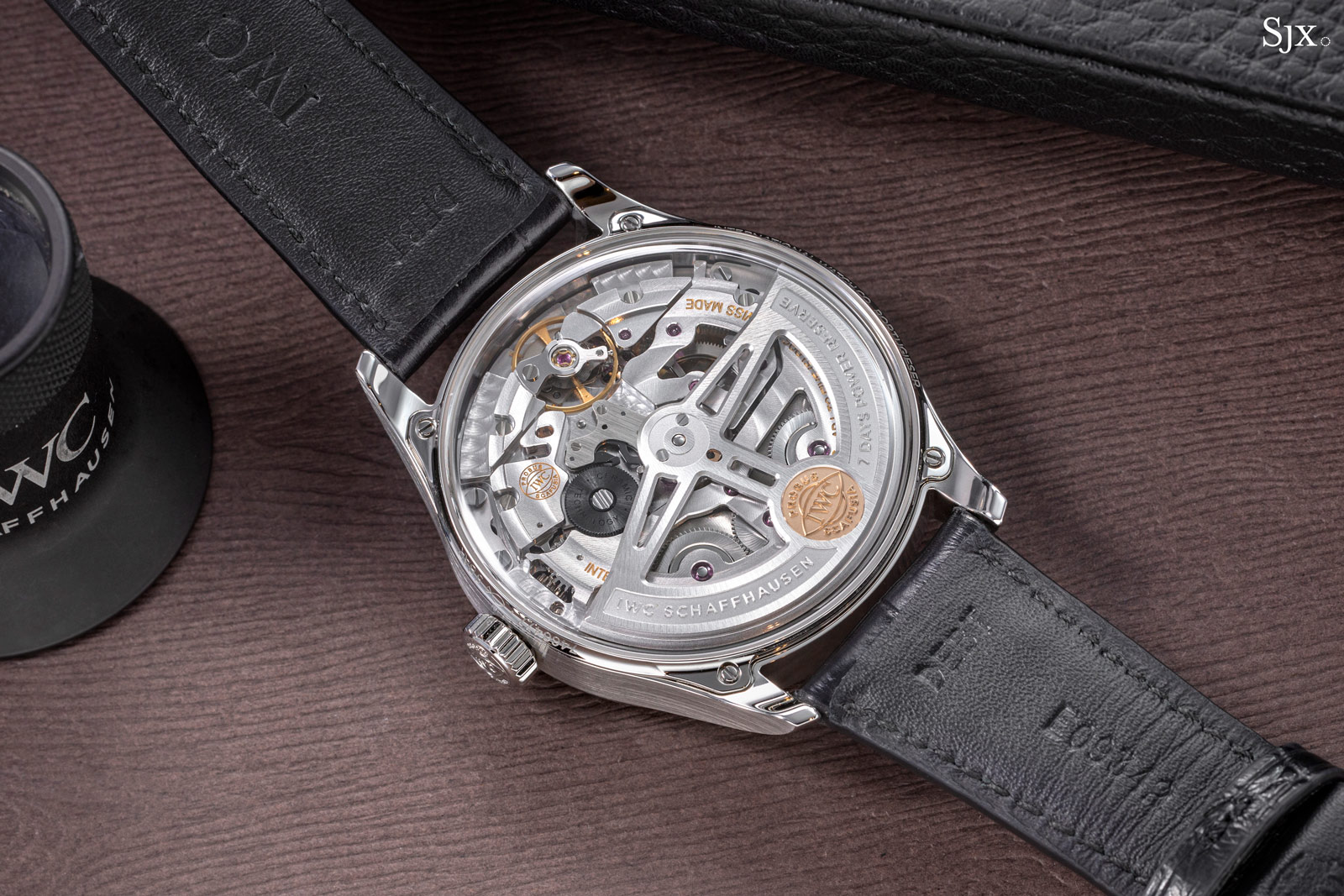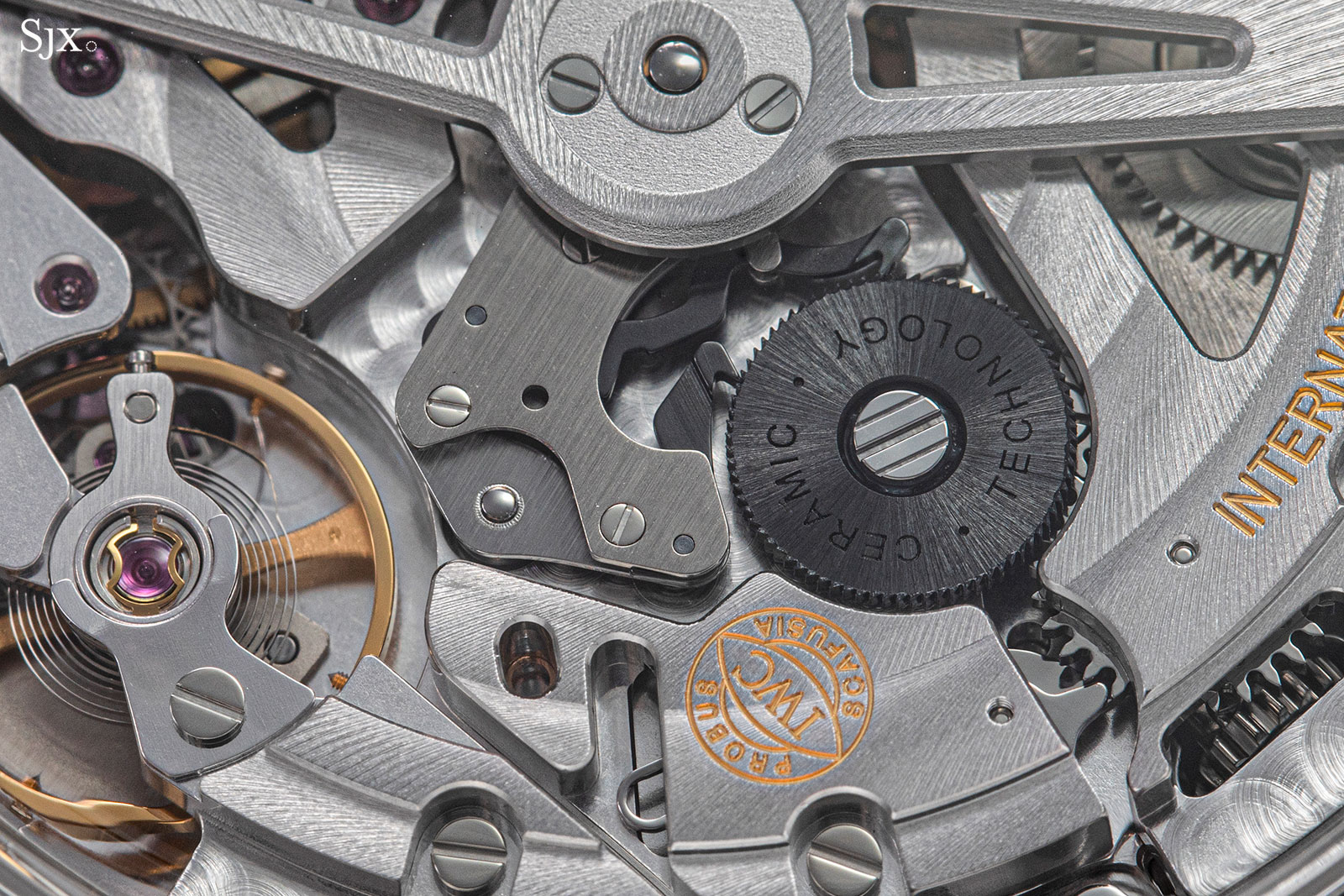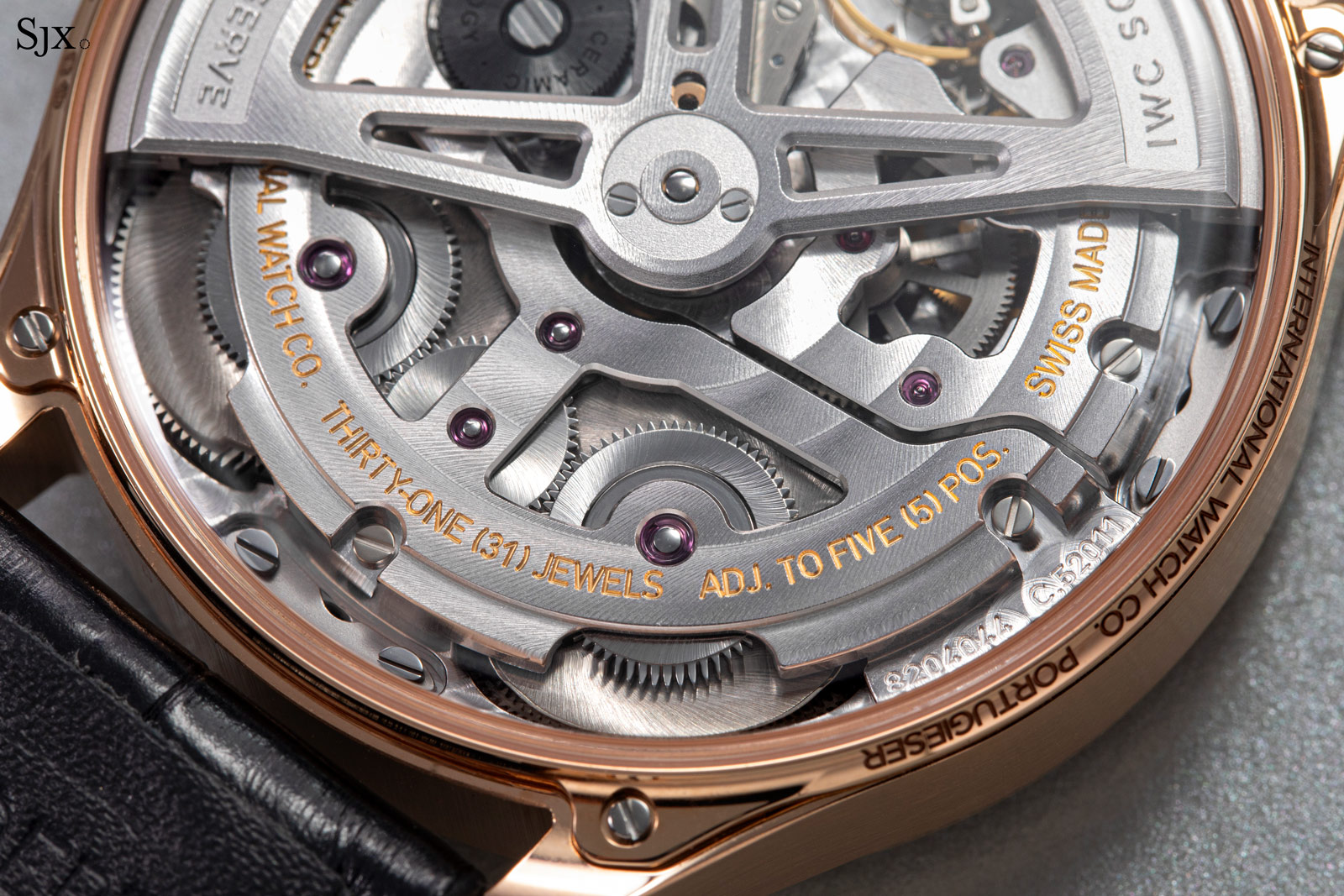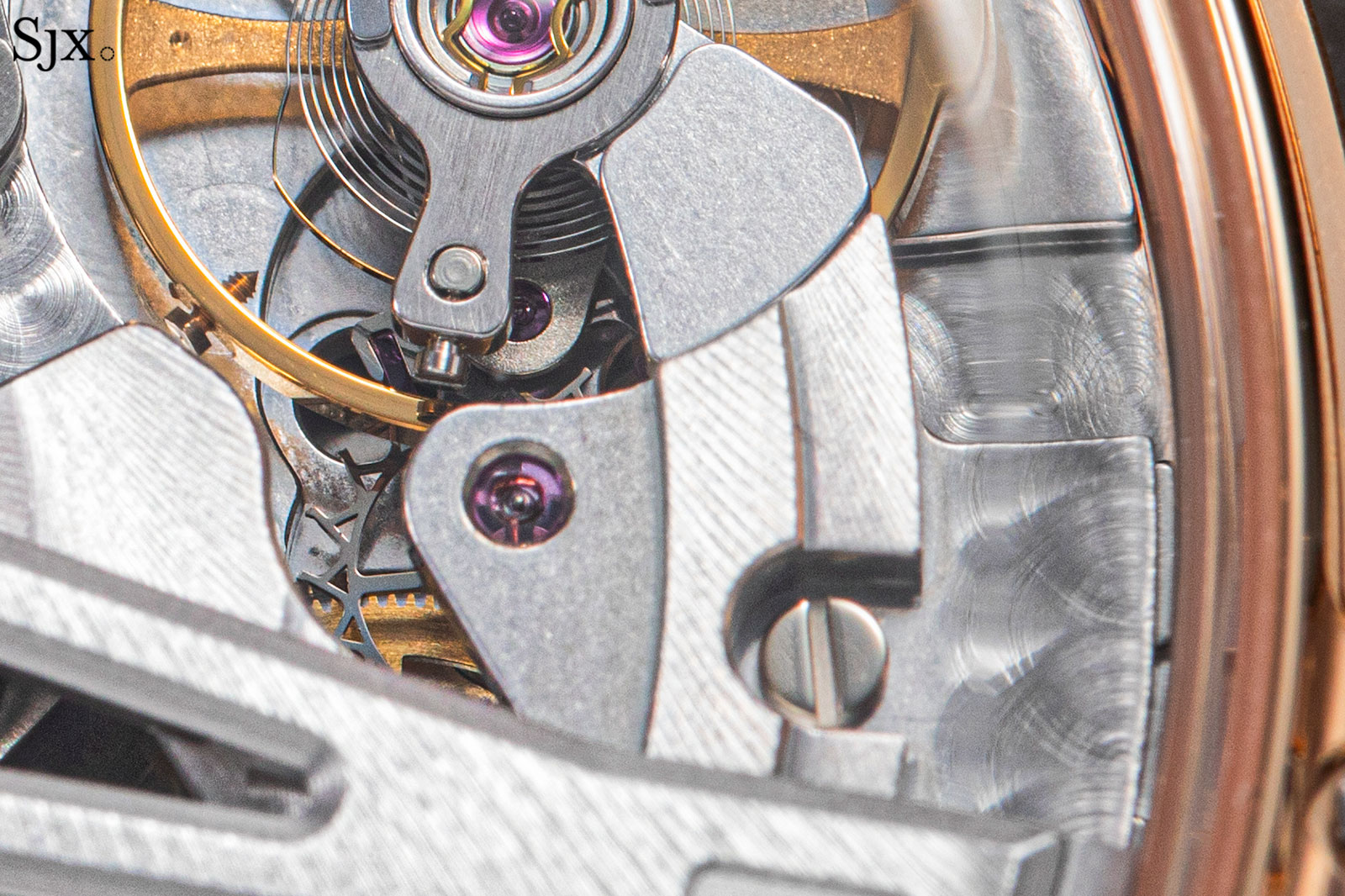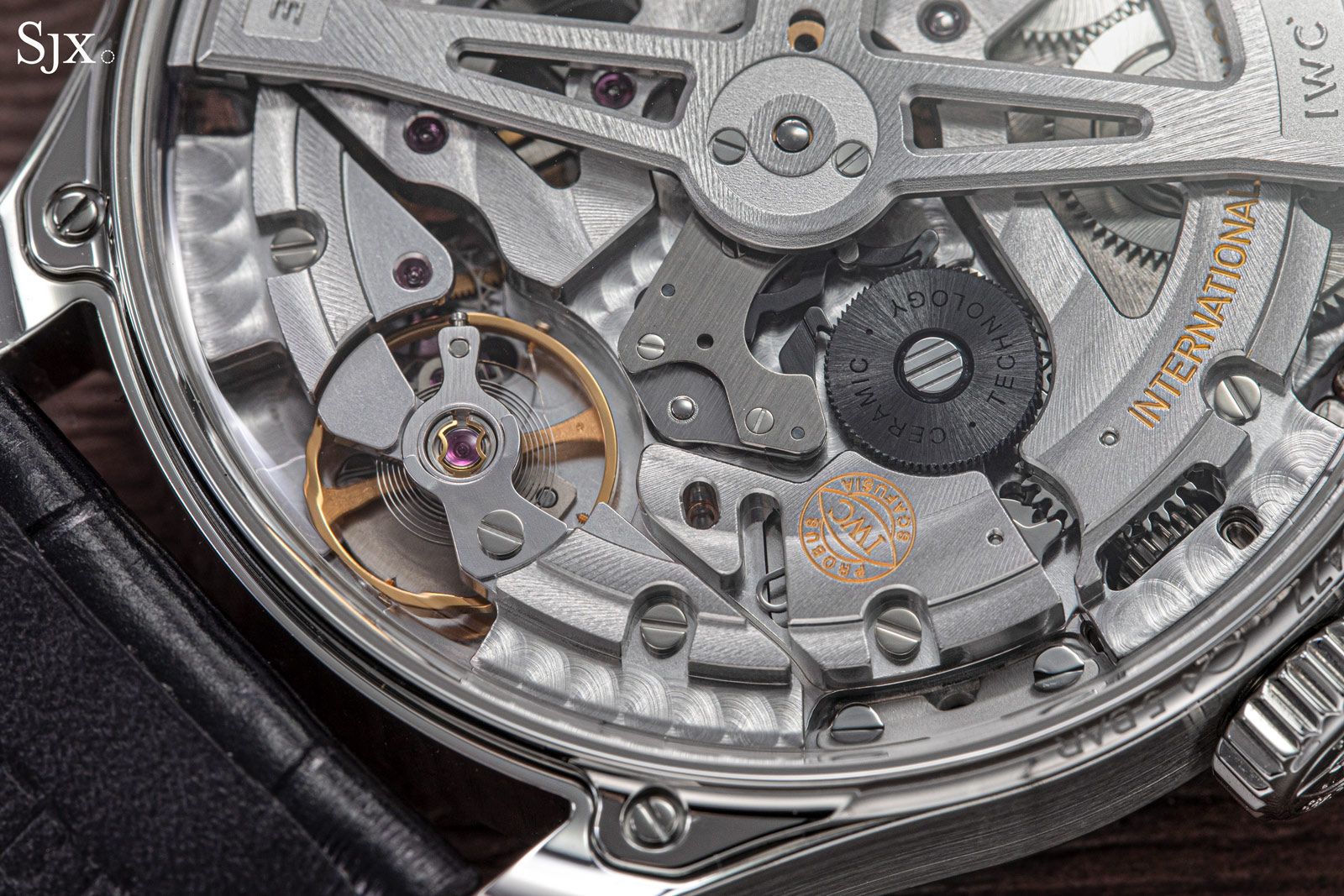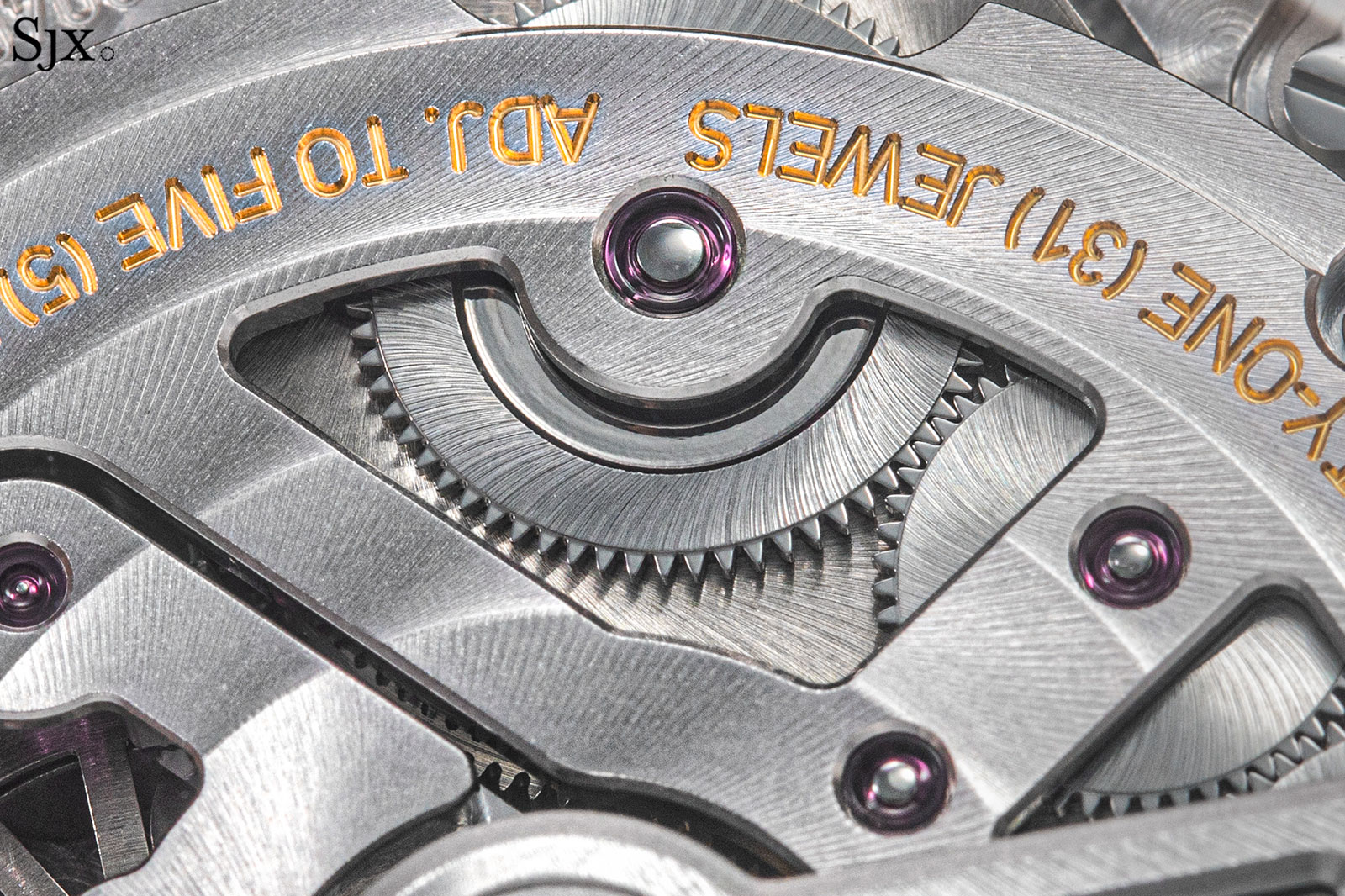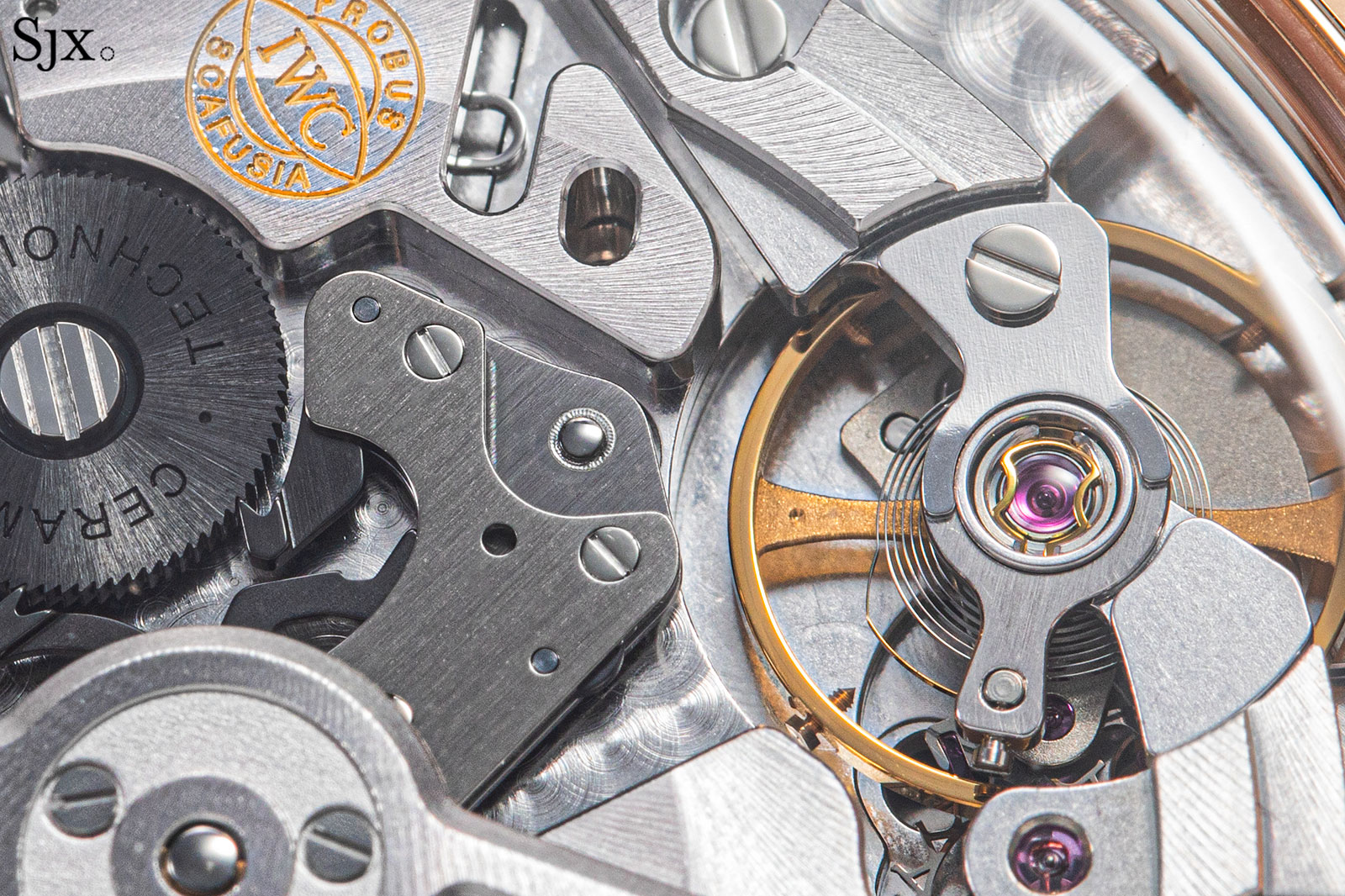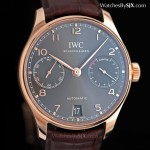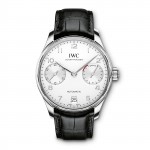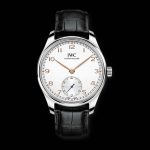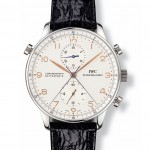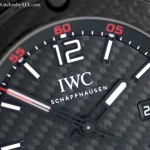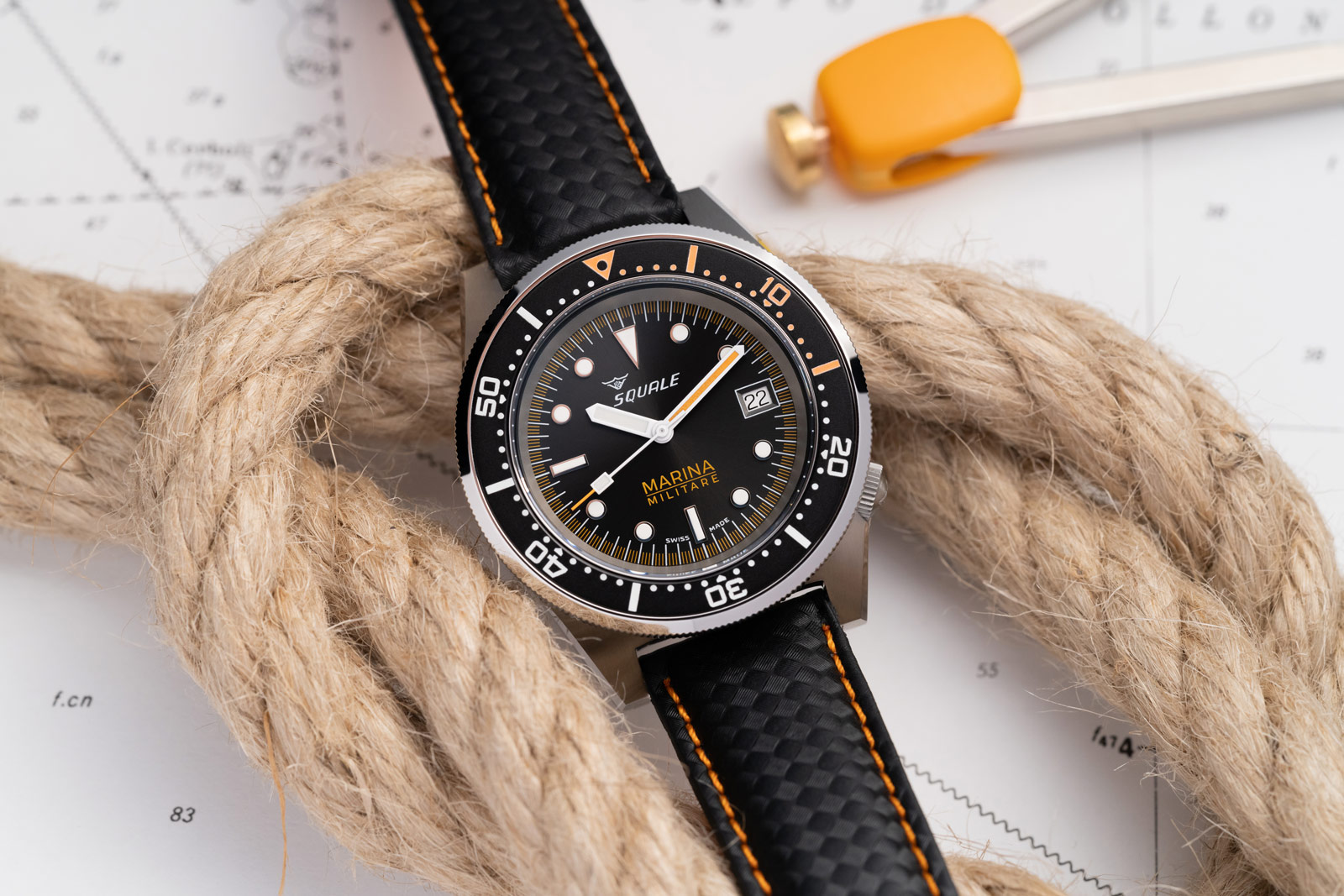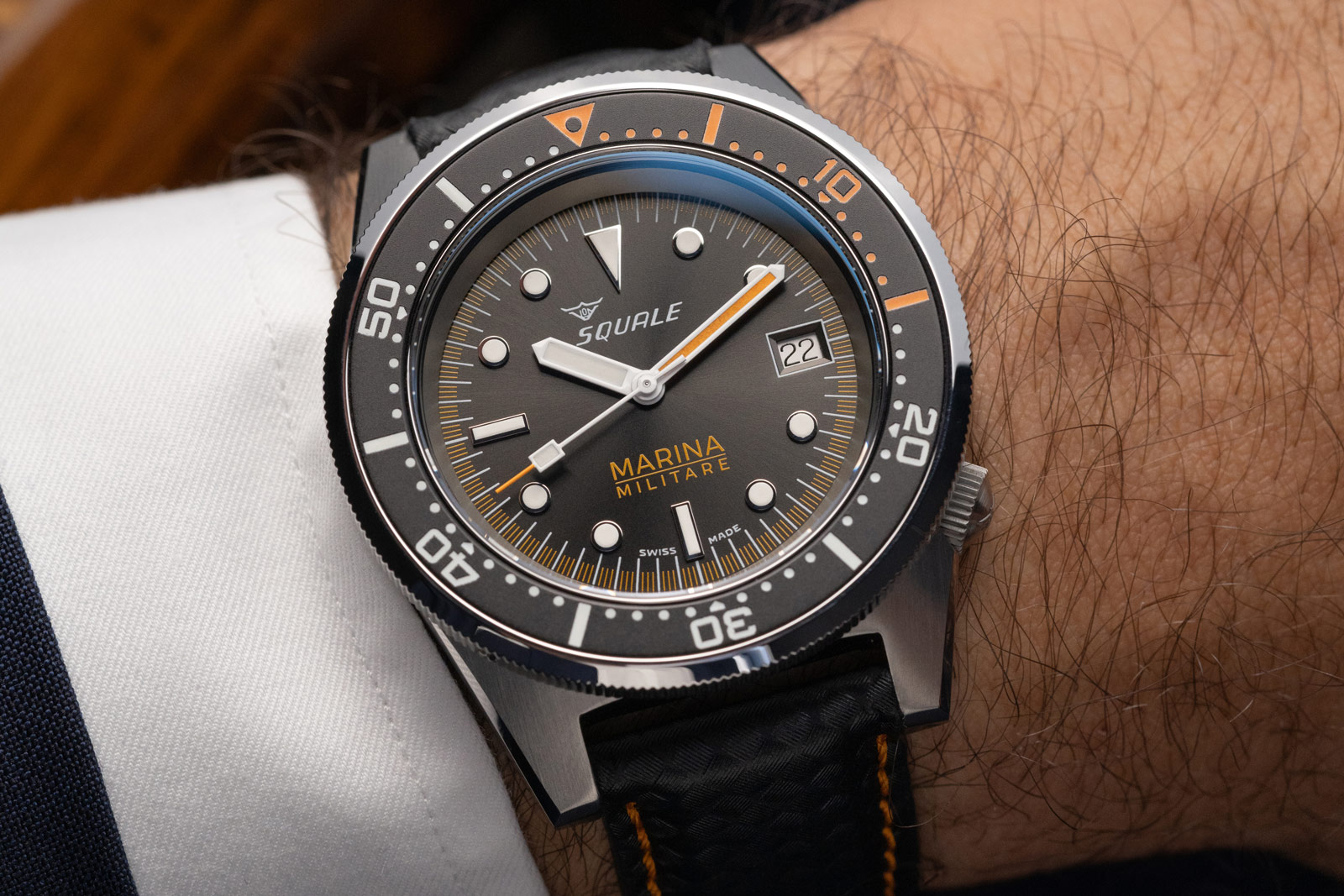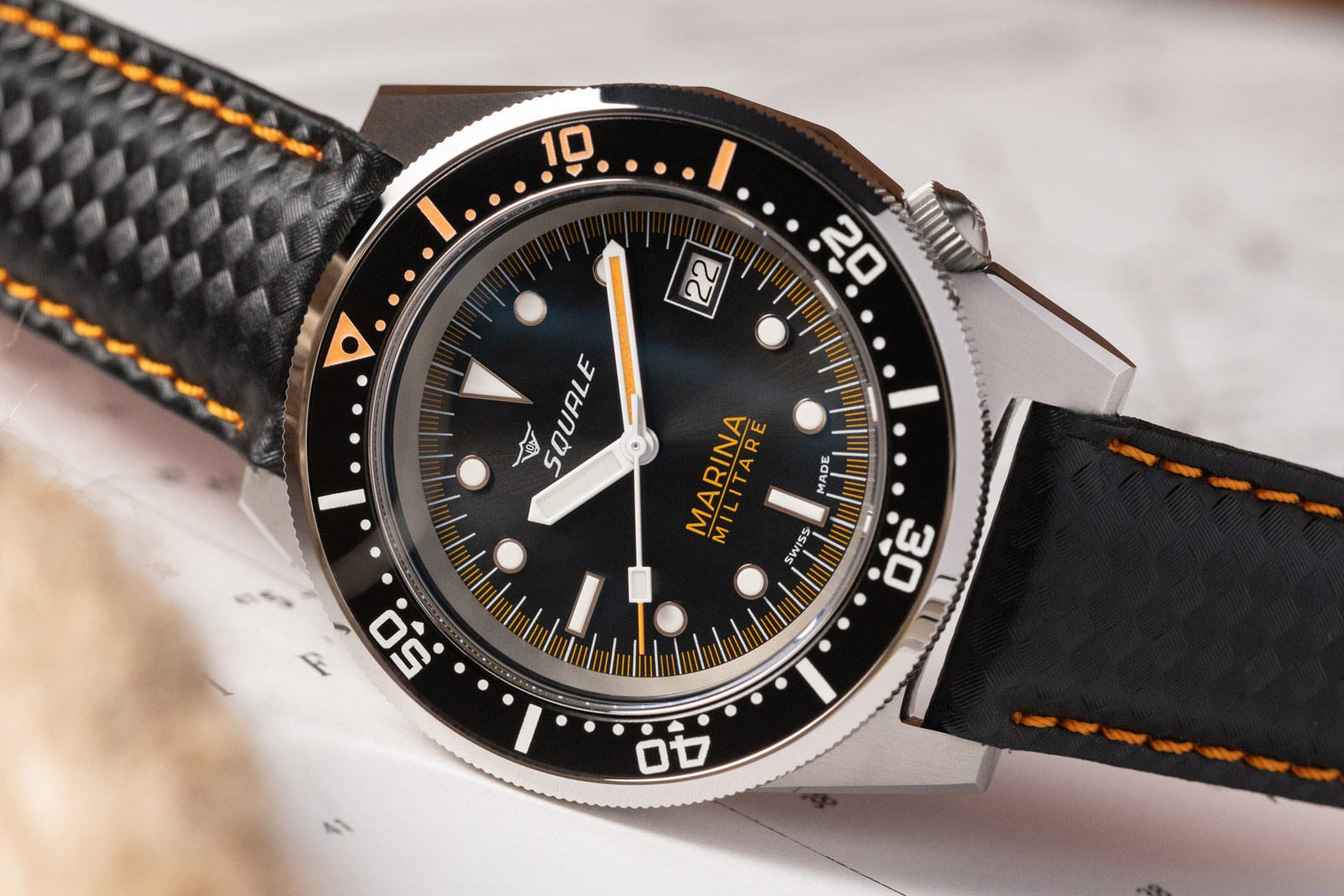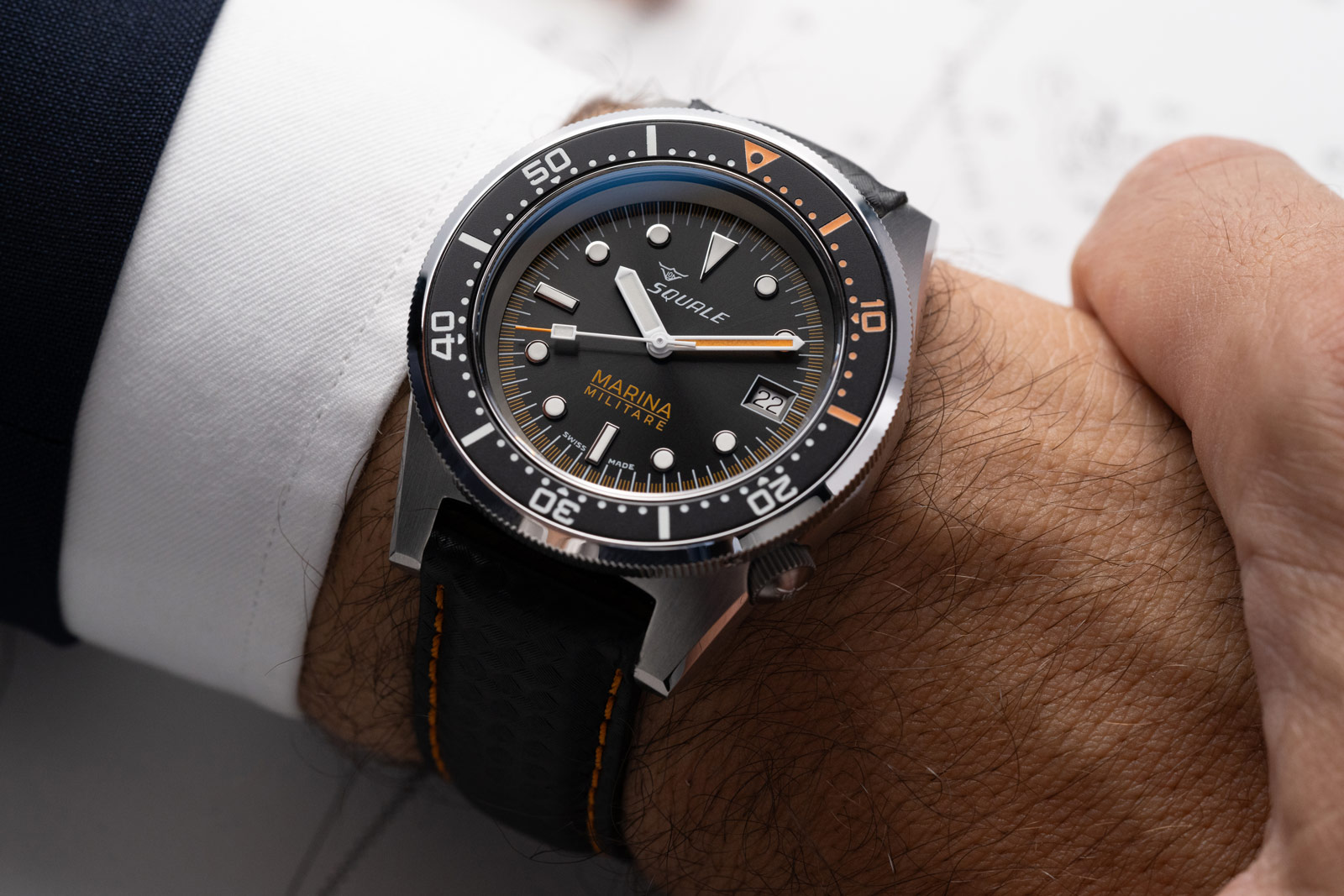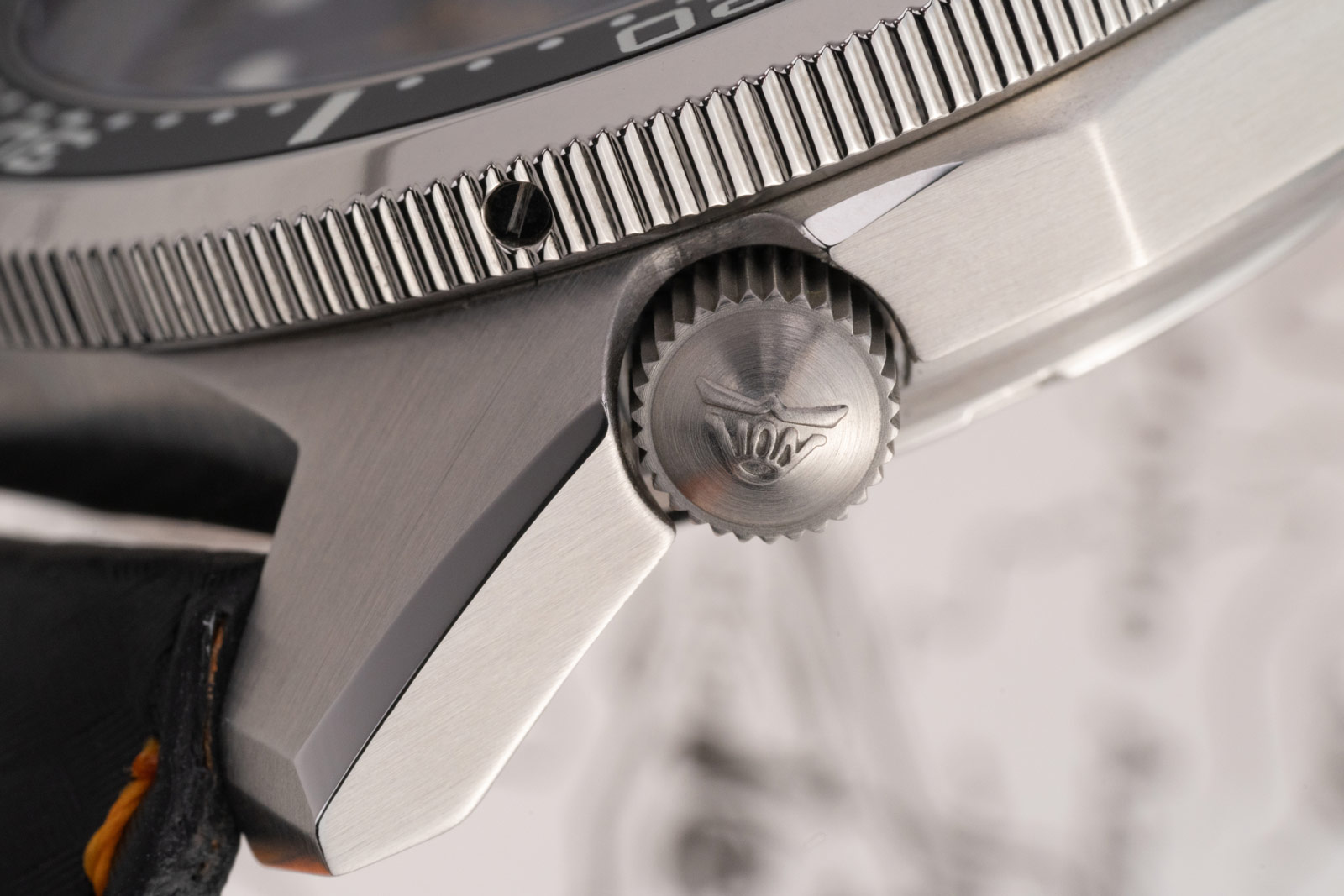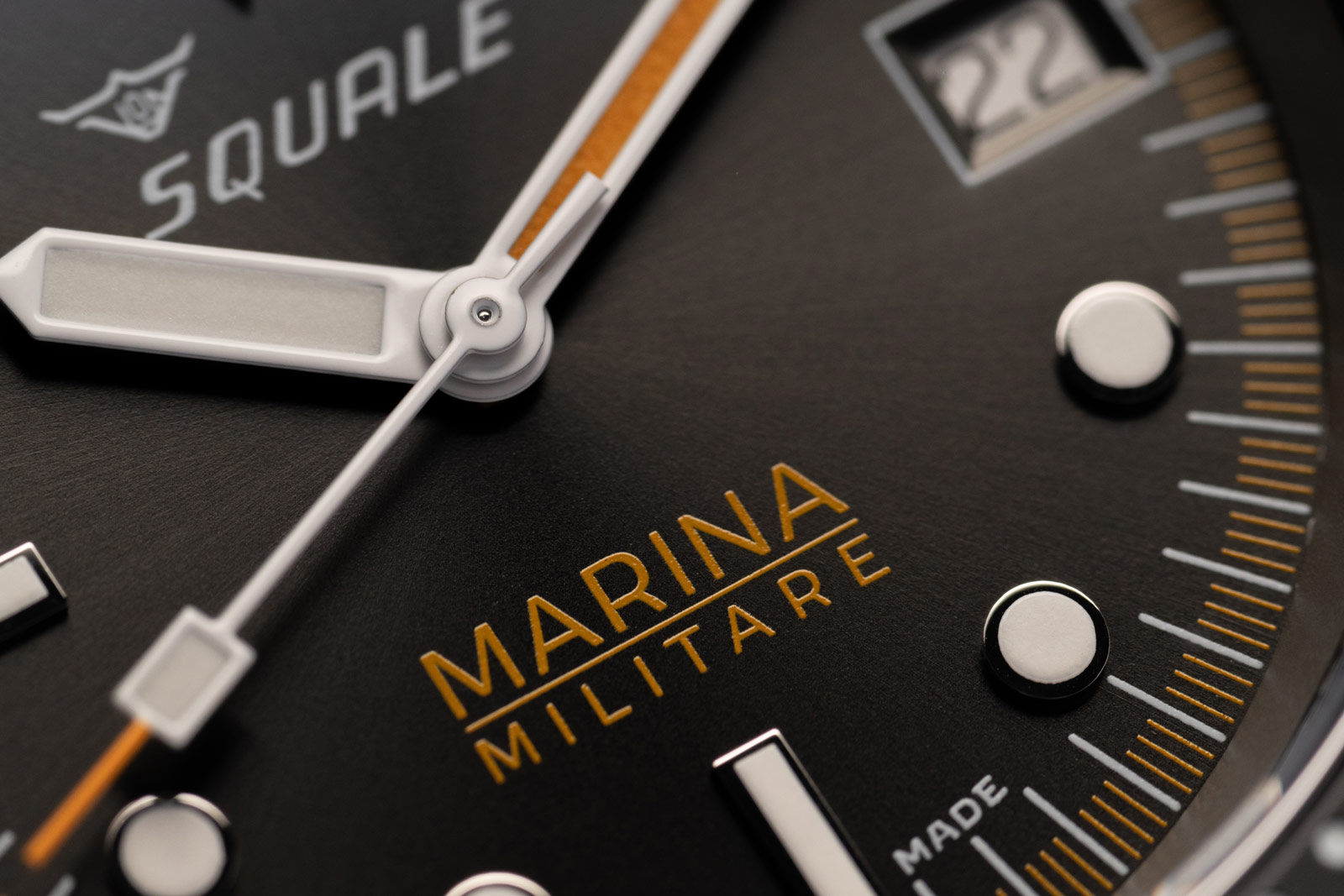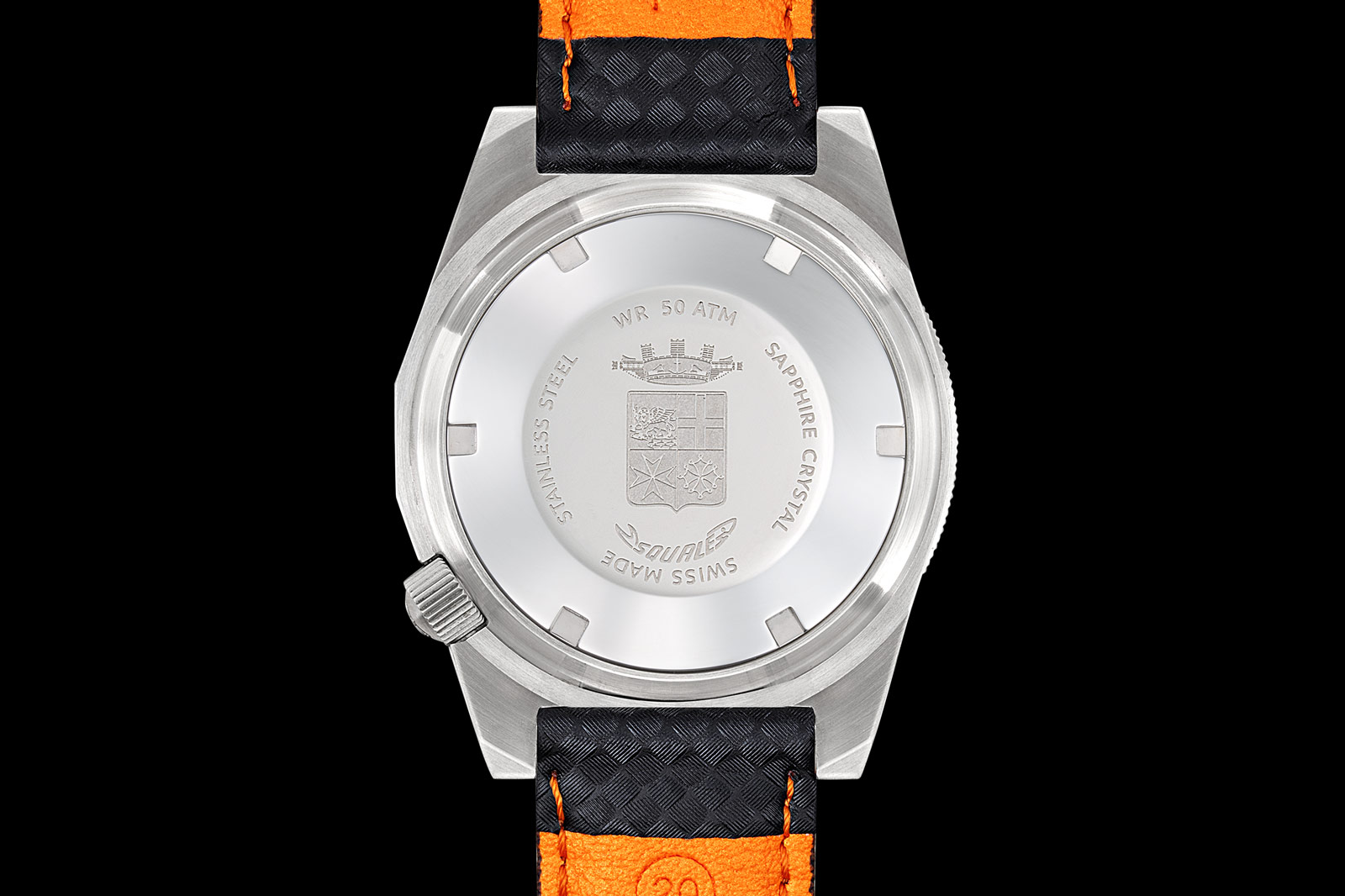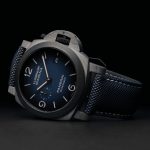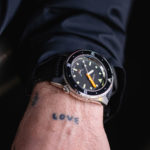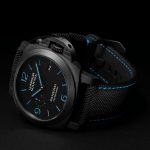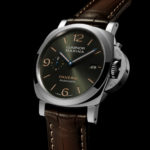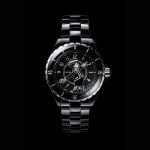Imperial China’s “Seawater, River, Cliff” Inspires Vacheron Constantin Métiers d’Art
Artful homage to a symbolic motif.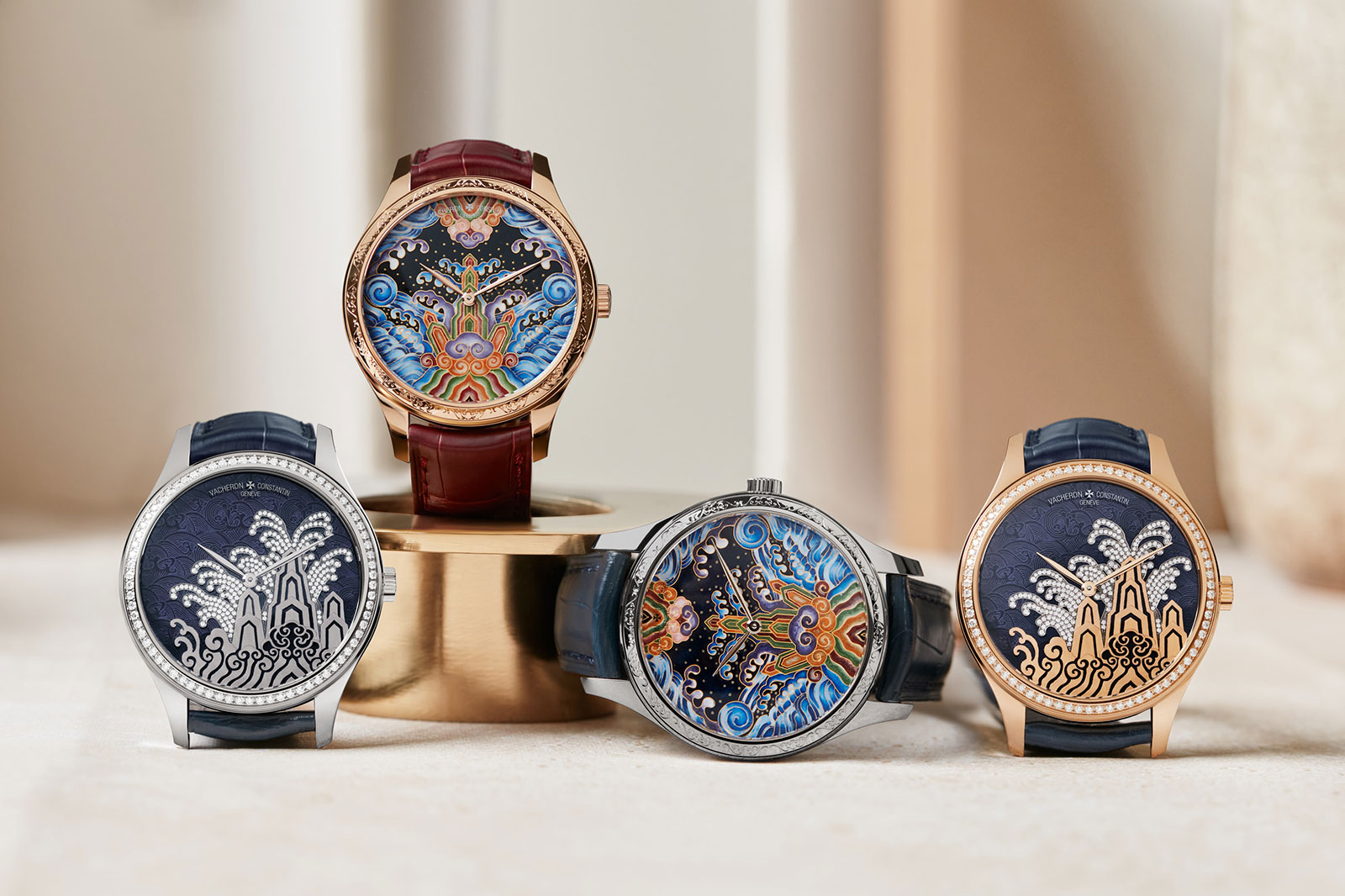
Continuing its recent run of watches dedicated to great art and ancient cultures, Vacheron Constantin (VC) now turns to the decorative symbolism of Imperial China. The Métiers d’Art Tribute to Traditional Symbols “Eternal Flow” and “Moonlight Slivers” are a pair of elaborately decorated watches inspired by 海水江崖纹, or “seawater, river, and cliff”, a highly symbolic motif employed during the Ming and Qing dynasties.
Executed in a variety of decorative techniques, the dials of the Métiers d’Art pair are subtle reinterpretations of the traditional motif. “Eternal Flow” is rendered in vivid cloisonné enamel and the more striking of the duo. “Moonlight Slivers”, on the other hand, is set with diamonds but presents a more restrained, stylised take on the pattern.
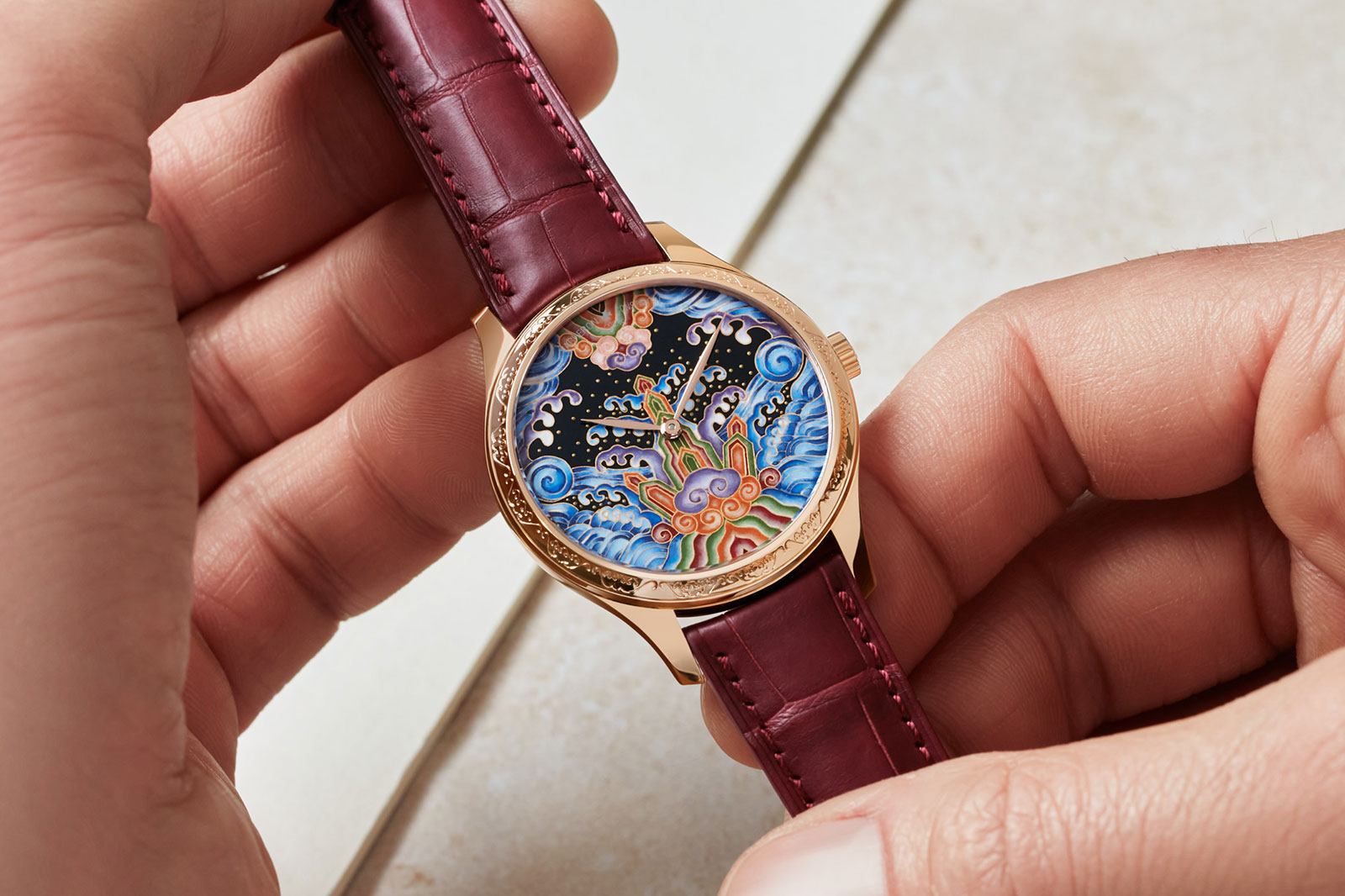
“Eternal Flow”
Initial thoughts
VC has a good track record at reproducing art on its watch dials. The Les Cabinotiers “Thunder God” and “Wind God” is a prime example of that. The Tribute to Traditional Symbols are similarly successful, though each of the pair is distinct from the other.
“Moonlight Slivers” is almost low-key with its dark blue enamel, though the diamond setting gives it a bit of glamour. It also feels more modern. At a distance the motif appears almost geometric and abstract, particularly in this monochromatic execution.
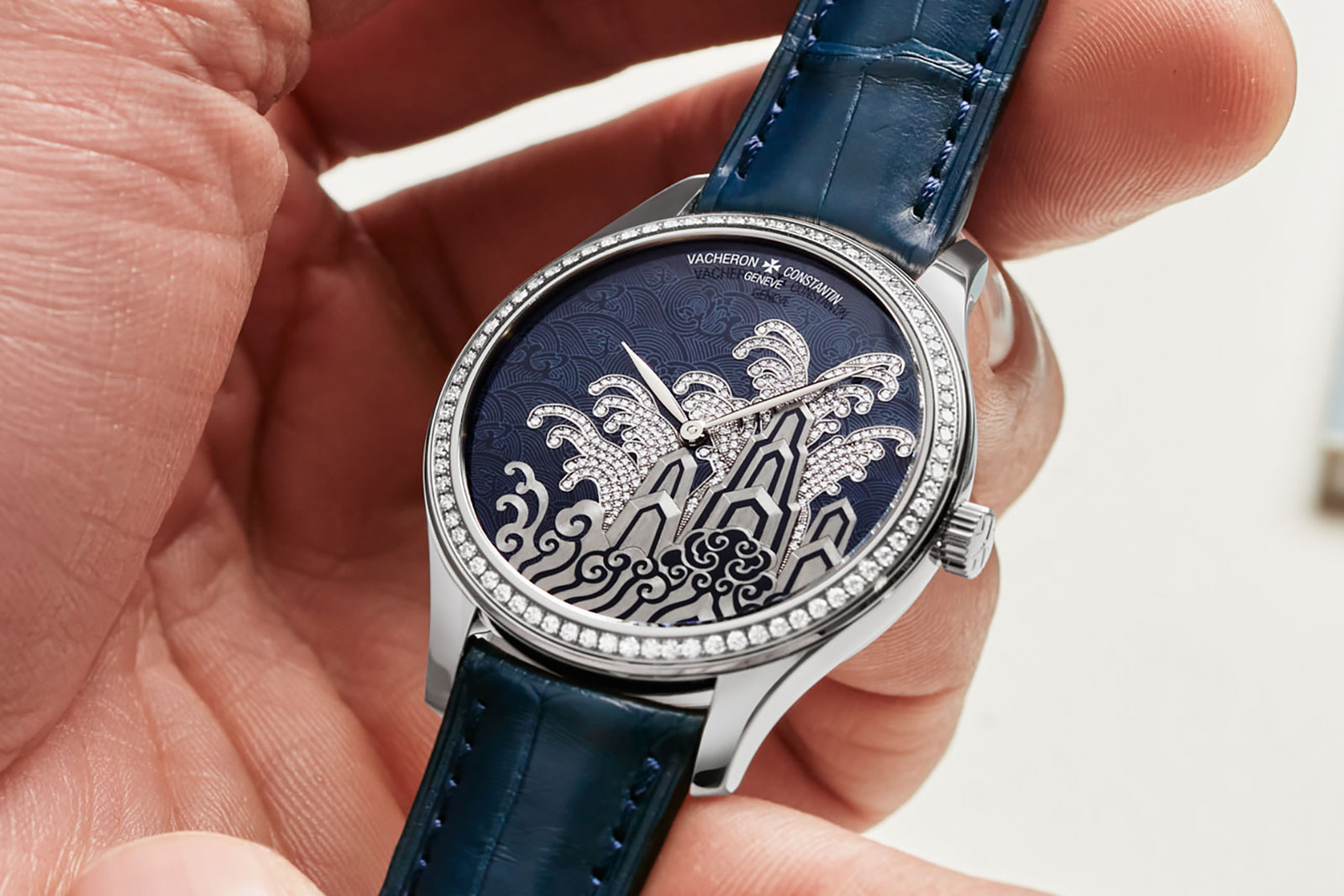
“Moonlight Slivers”
In contrast, “Eternal Flow” is full Technicolour with the Imperial robe motif in all its glory. It’s almost too much and verges on being kitschy chinoiserie but I like it for a few reasons.
For one, the pattern replicates the style of the historical original. At the same time, the enamel work is excellent (and mostly likely in-house though the dial is unsigned). Although the dial bear the name of a “celebrity” enameller, the work is evidently top quality.
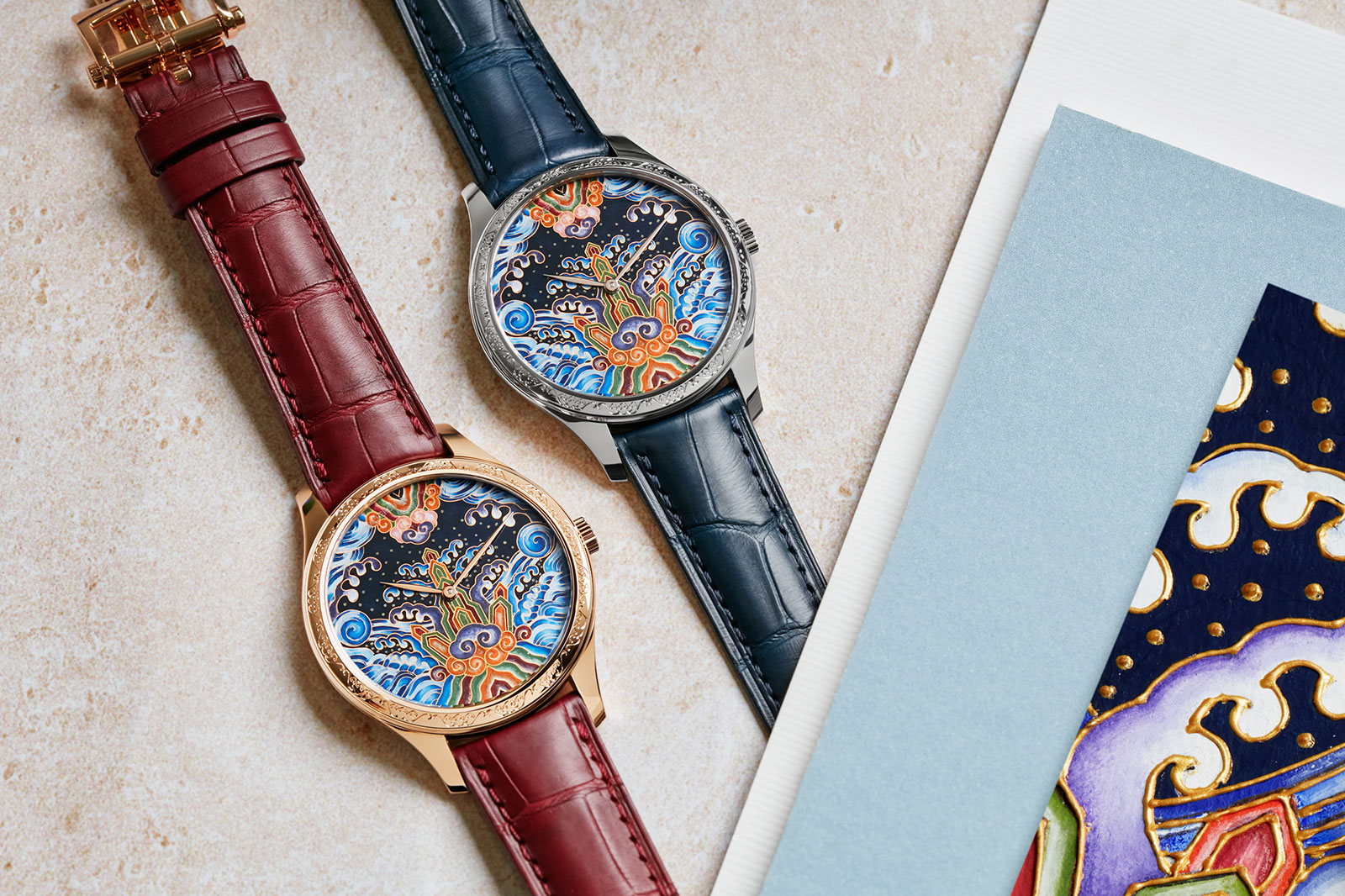
“Eternal Flow” in both pink and white gold
More broadly, the Tribute to Traditional Symbols duo continues VC’s focus on arts, culture, and ancient civilisations with its Métiers d’Art watches. This helps set the brand’s offerings apart from the competition, which often turn to more diverse or modern themes (Patek Philippe’s Rare Handcrafts marquetry surfer comes to mind), or motifs specific to the brand itself (like Cartier’s many animals).
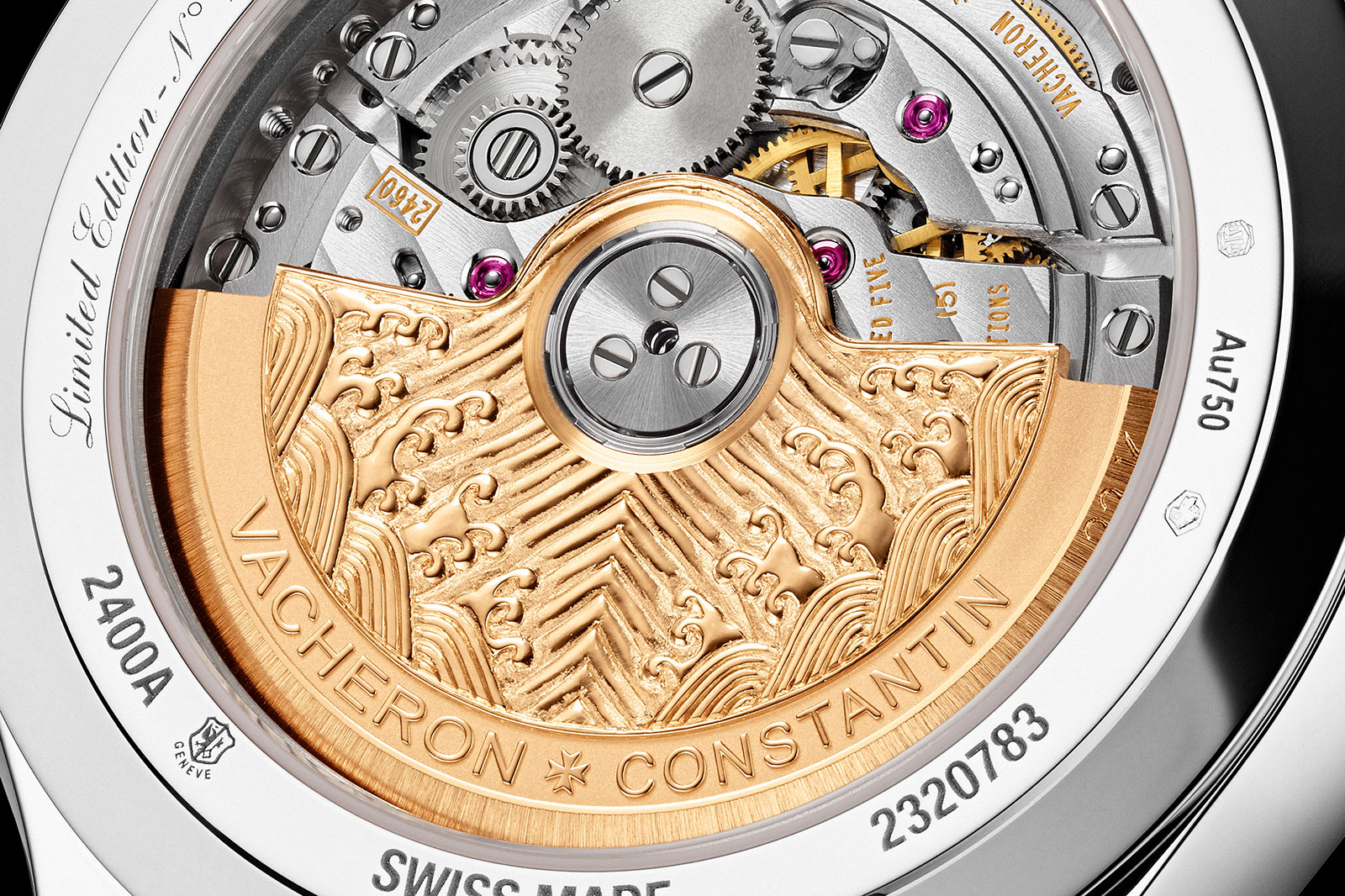
Both models are fitted with a relief rotor bearing the “seawater cliff” motif
海水江崖纹
Translates literally as “seawater, river, and cliff pattern”, 海水江崖纹 is most often found on the hems and cuffs of Imperial robes starting with the Ming dynasty and especially the Qing dynasty.
Though the pattern evolved over time, the motif is fundamentally comprised of two parts: “seawater”, representing the imperial dynasty, and “river and cliff” that represents the country. Together they represent eternal peace in the universe, presided over by the emperor.

A 1736 portrait of the Qianlong Emperor by Giuseppe Castiglione, with the emperor’s robe showing the “seawater cliff” pattern on its hems and cuffs. Image – The Palace Museum, Beijing
Both the Métiers d’Art “Eternal Flow” and “Moonlight Slivers” take inspiration from the Qing dynasty motif with diagonal waves, vertical cliffs, and spreading waves. According to Vacheron Constantin, the dial designs were created with the assistance of a former Associate Research Librarian of The Palace Museum in Beijing, Song Hanyang.
“Eternal Flow” and “Moonlight Slivers” share the same 38 mm case – in either 18k white or pink gold – that contains the in-house cal. 2460. Each, however, is decorated with varying techniques and feels entirely different from the other.
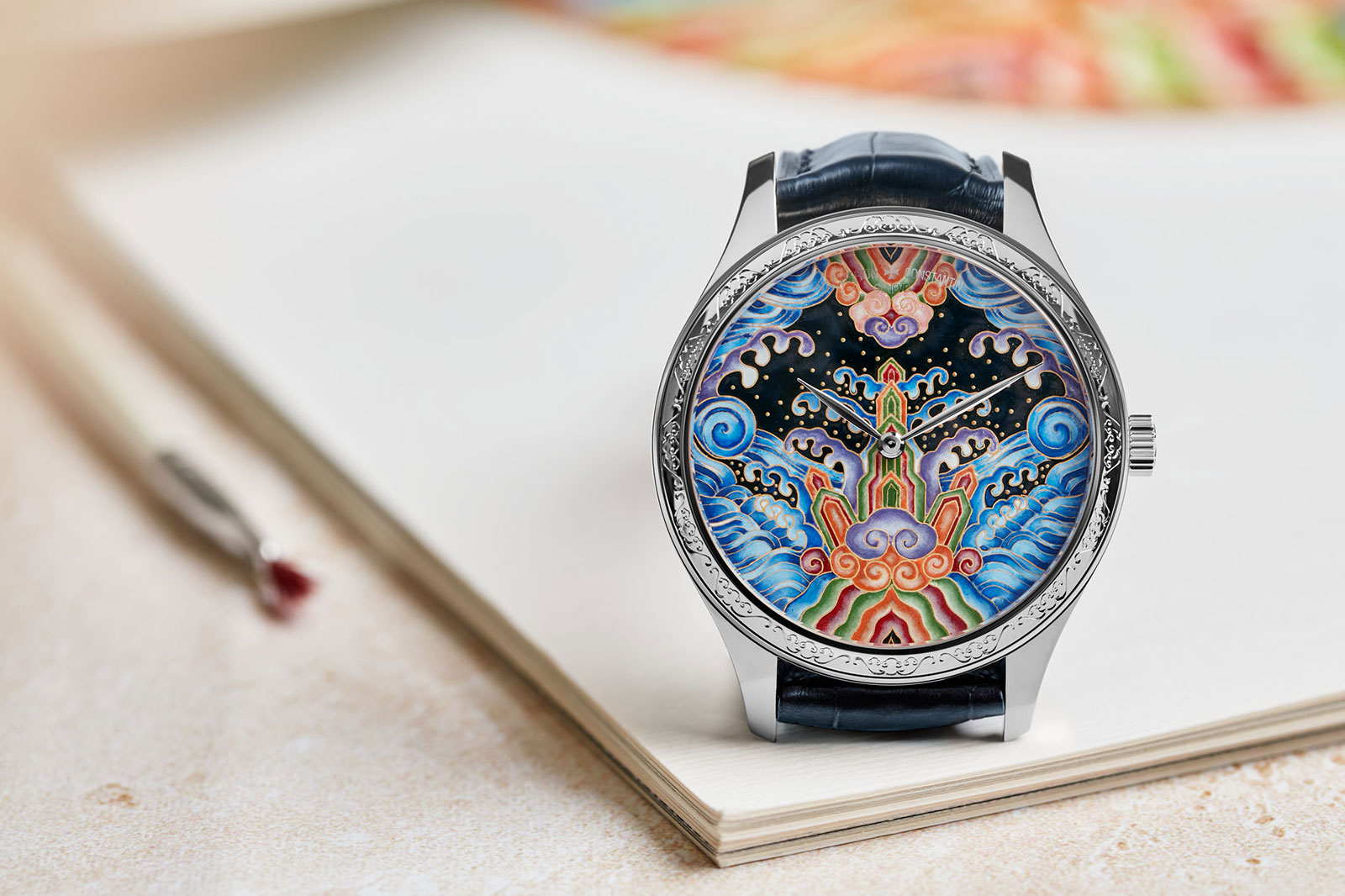
“Eternal Flow”
The more colourful of the pair is “Eternal Flow”. Its dial is entirely in cloisonné enamel and depicts the “seawater cliff” pattern against a star-studded night sky.
Interestingly, the cloisonné technique itself is a nod to ancient Chinese artisanal techniques. Specifically, the dark blue background is a reference to “Jingtai Blue” (景泰蓝), a cloisonné technique particularly popular during the reign of the Jingtai Emperor of the Ming dynasty.
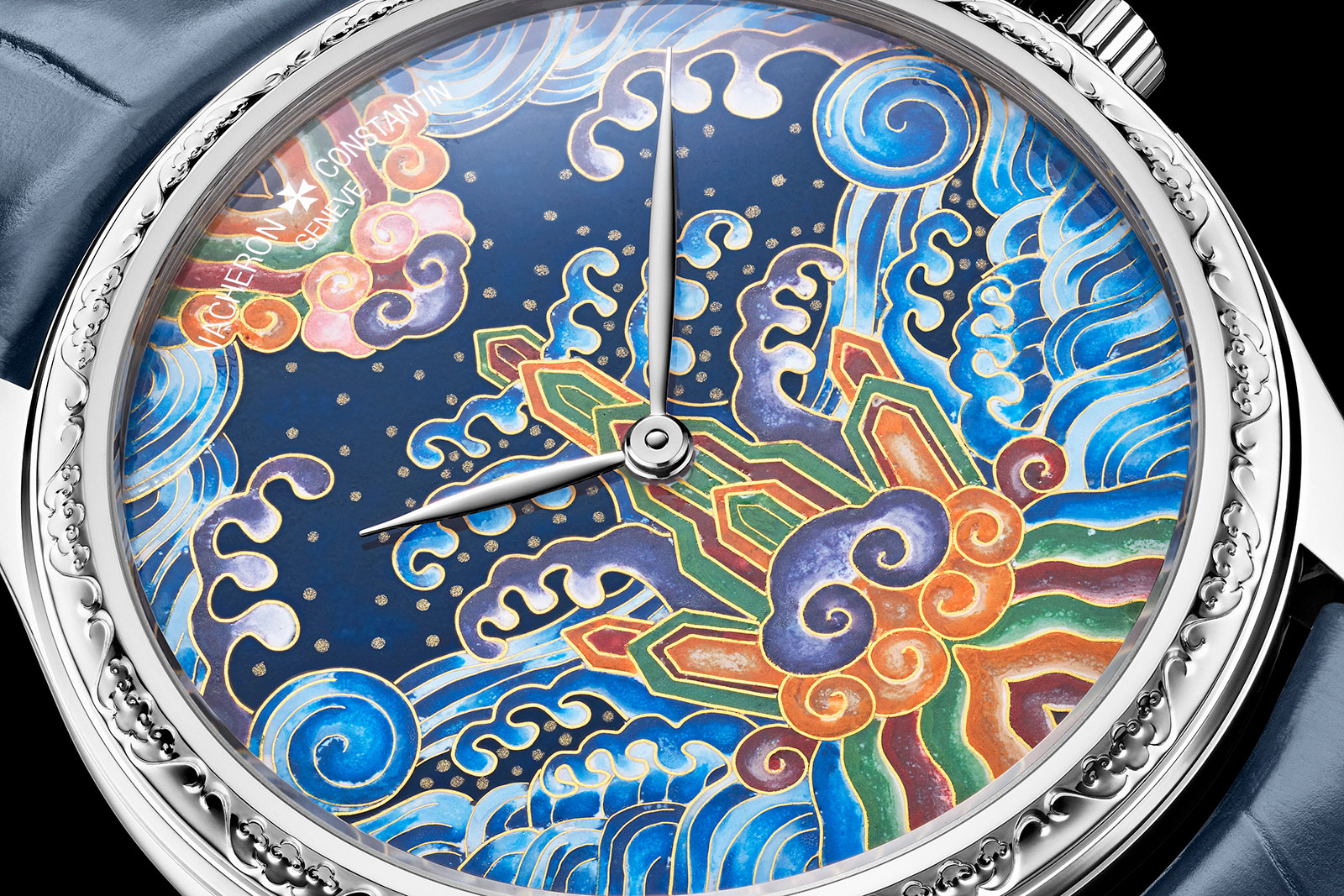
The cloisonné dial of “Eternal Flow” with a background inspired by “Jingtai Blue”
According to Vacheron Constantin, 220 individual gold wires of varying lengths were cut and shaped by hand before being soldered individually to the dial, a process that takes some 50 hours. The wires form the cells to accommodate the enamel, which require another 70 hours of repeated painting and firing in an oven.
Once complete, the cloisonné dial is gently lapped to give it a smooth surface that is then further covered with a layer of clear fired enamel for protection.
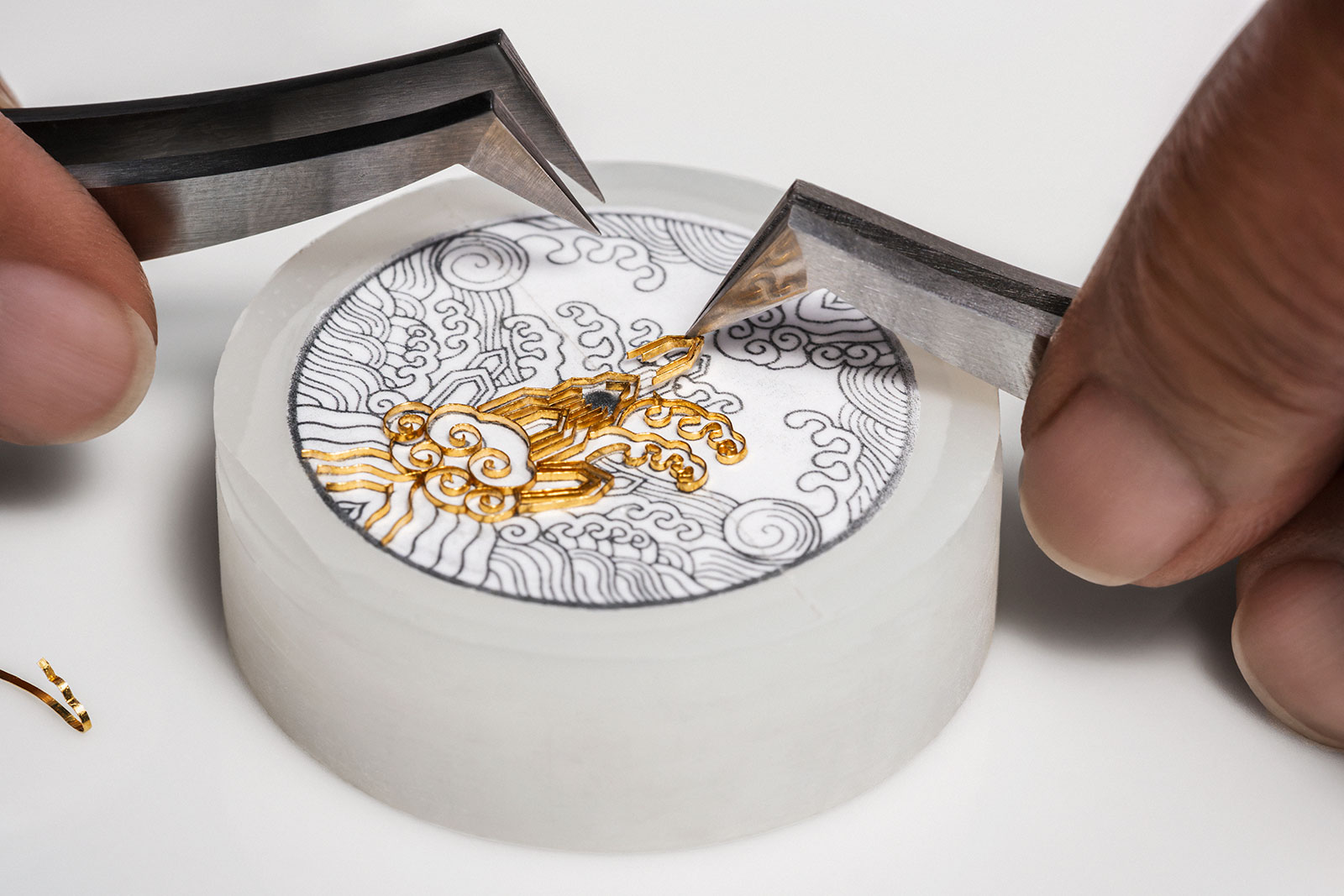
Applying the gold wires to the dial
“Eternal Flow” is further accented by hand engraving in the bezel that depicts a repeating stylised bat motif.
Bats are a homonym for good fortune in Mandarin, and a five-bat motif represents the five fortunes: health, wealth, longevity, virtue, and a peaceful or timely death.
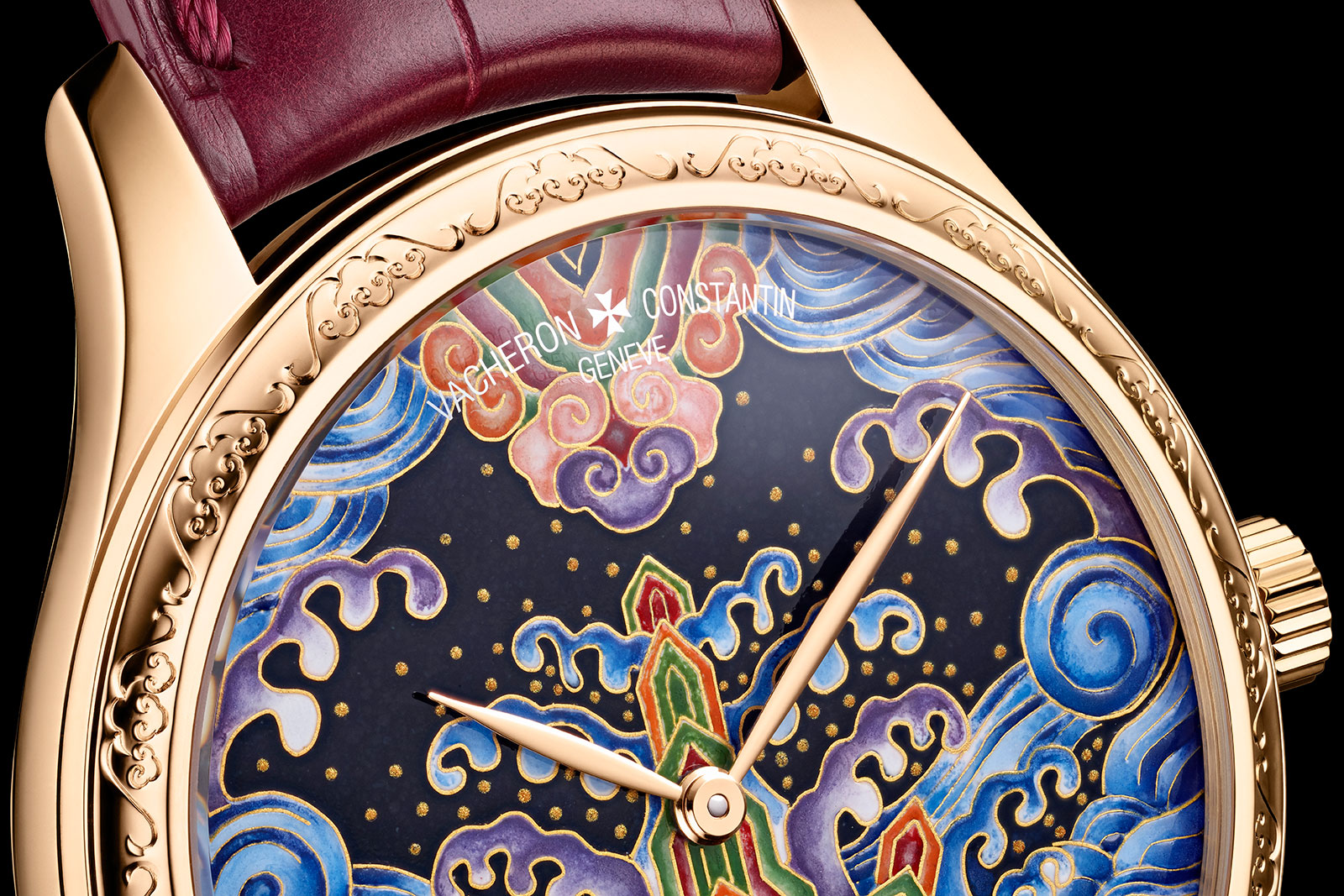
The hand-engraved bezel
“Moonlight Slivers”, on the other hand, is more elaborate in employing more decorative techniques, but more muted in terms of style.
“The aim [of the Moonlight Slivers dial] was to achieve a depth effect on a monochrome base,” says Christian Selmoni, Style and Heritage Director at VC, ” Engraving… with recessed enamelled and gemset parts… accentuate the 3D effect, which is achieved here using a ‘flat wash’ uniform layer of paint in a single colour.”
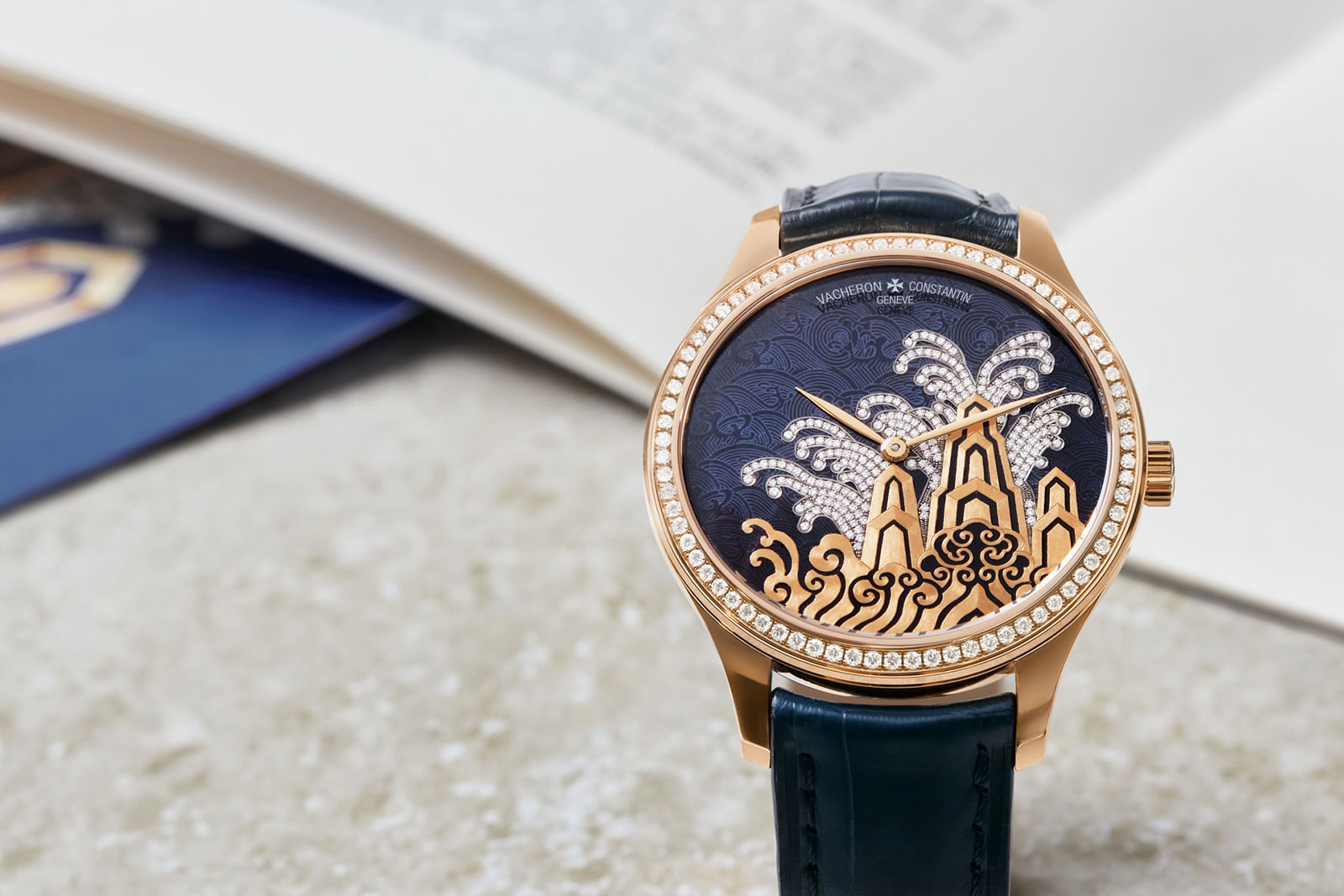
“Moonlight Slivers” in pink gold, with a dial appliqué to match the case
The dial base is dark blue fired enamel that is artfully engraved with a stylised wave motif in a manner similar to grisaille enamelling. But the engraved lines are then filled with white enamel that is also fired, creating more prominent lines for the waves.
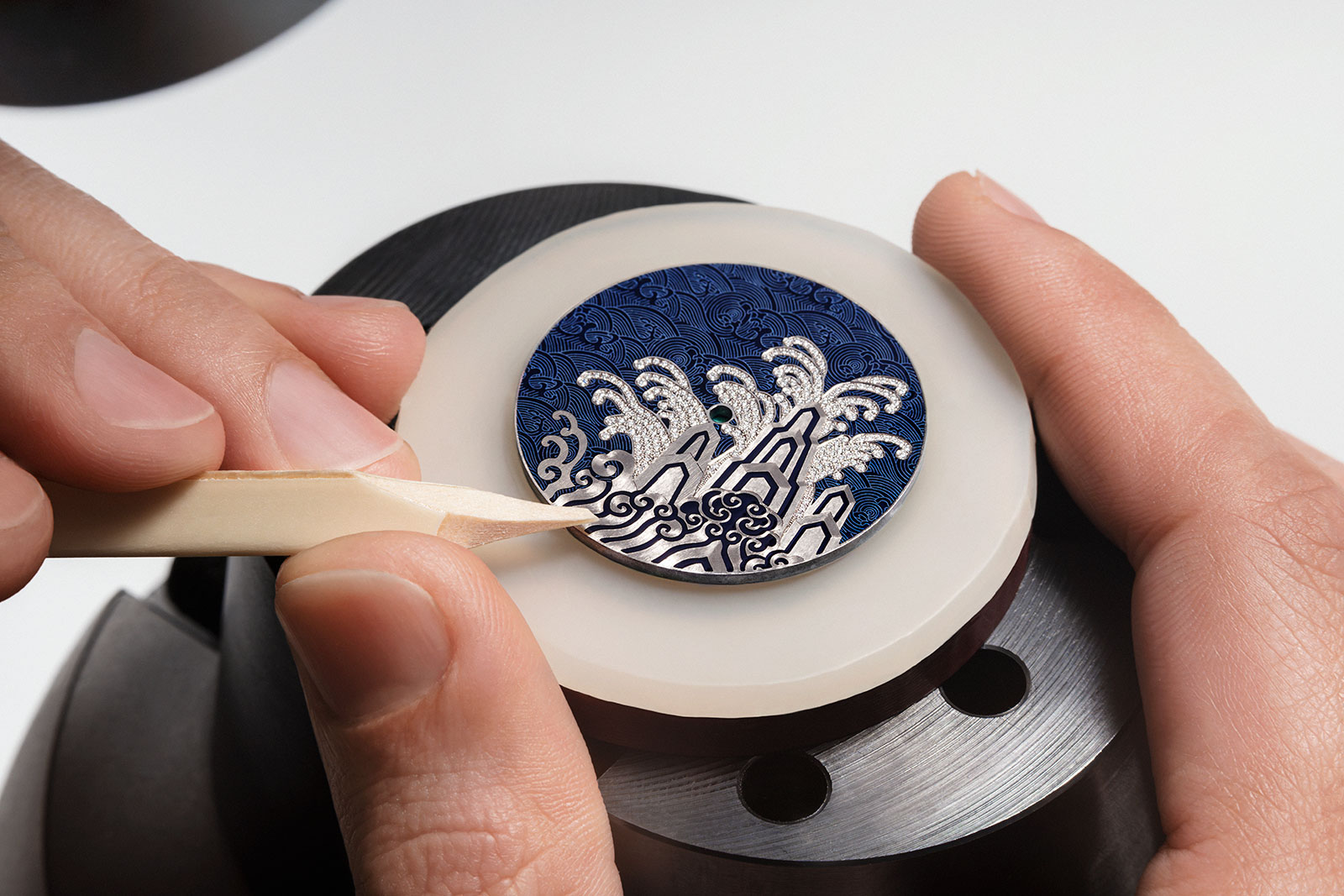
The second part of the dial is the solid-gold appliqué with the cliffs and waves that’s hand engraved and then enamelled with the champleve technique.
And the finishing touch is 239 brilliant-cut diamonds set into the waves above the cliffs, which are actually channels engraved on the dial base. Another 74 brilliant-cut diamonds are set on the bezel, which are meant to represent moonlight over the sea.
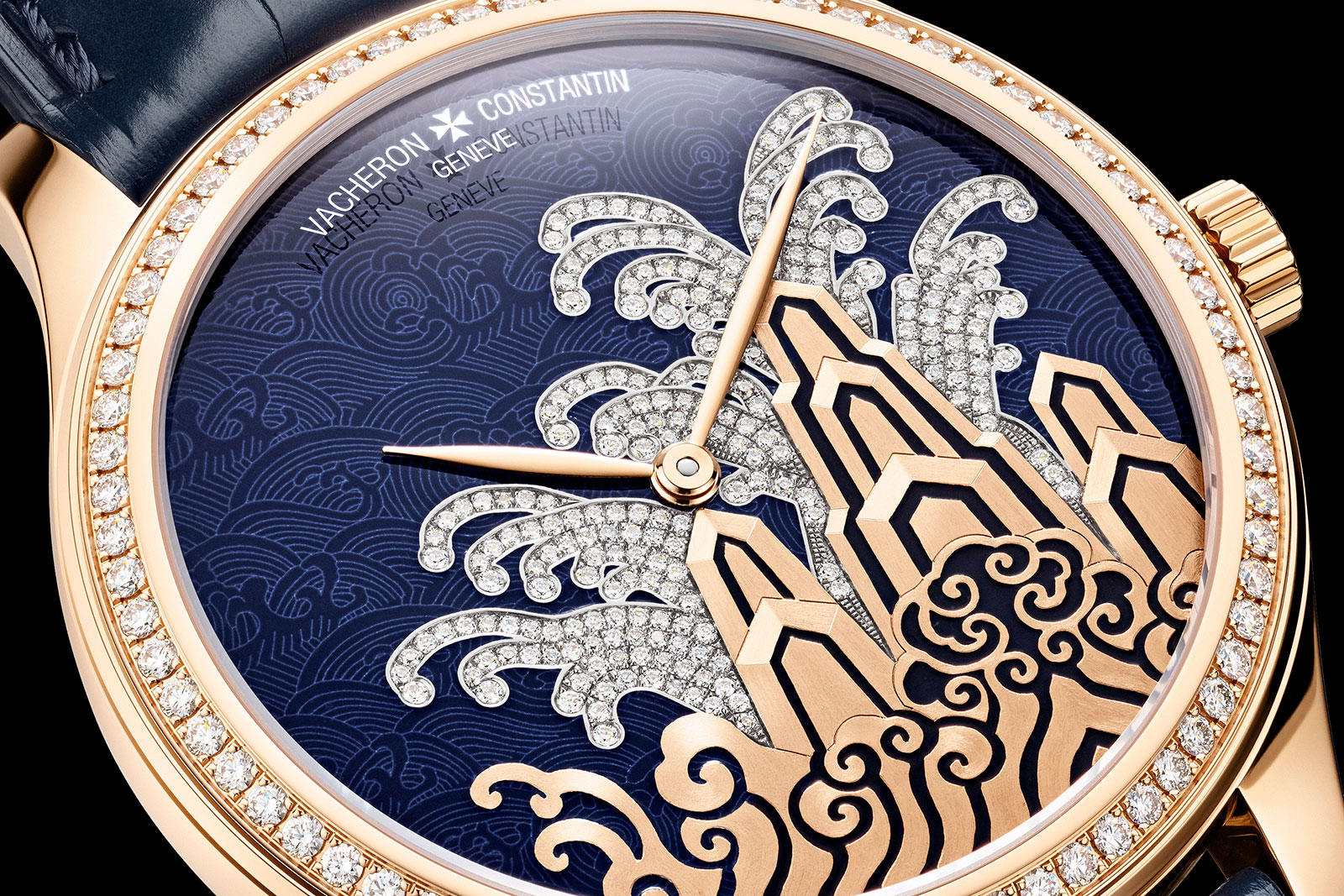
Both watches share the same movement, which continues the decoration on the dial. It’s the cal. 2460, an in-house movement that’s long powered the brand’s time-only Métiers d’Art models. Here it’s dressed up with a 22k gold rotor that’s been cast with a relief “seawater cliff” pattern to echo the dials.
Although simple in functional terms, the cal. 2460 has a refined, elaborate construction. The calibre is now almost 20 years old, having been introduced in 2005, so it makes do with a relatively short power reserve of 40 hours, unlike VC’s newer movements that have longer running times.
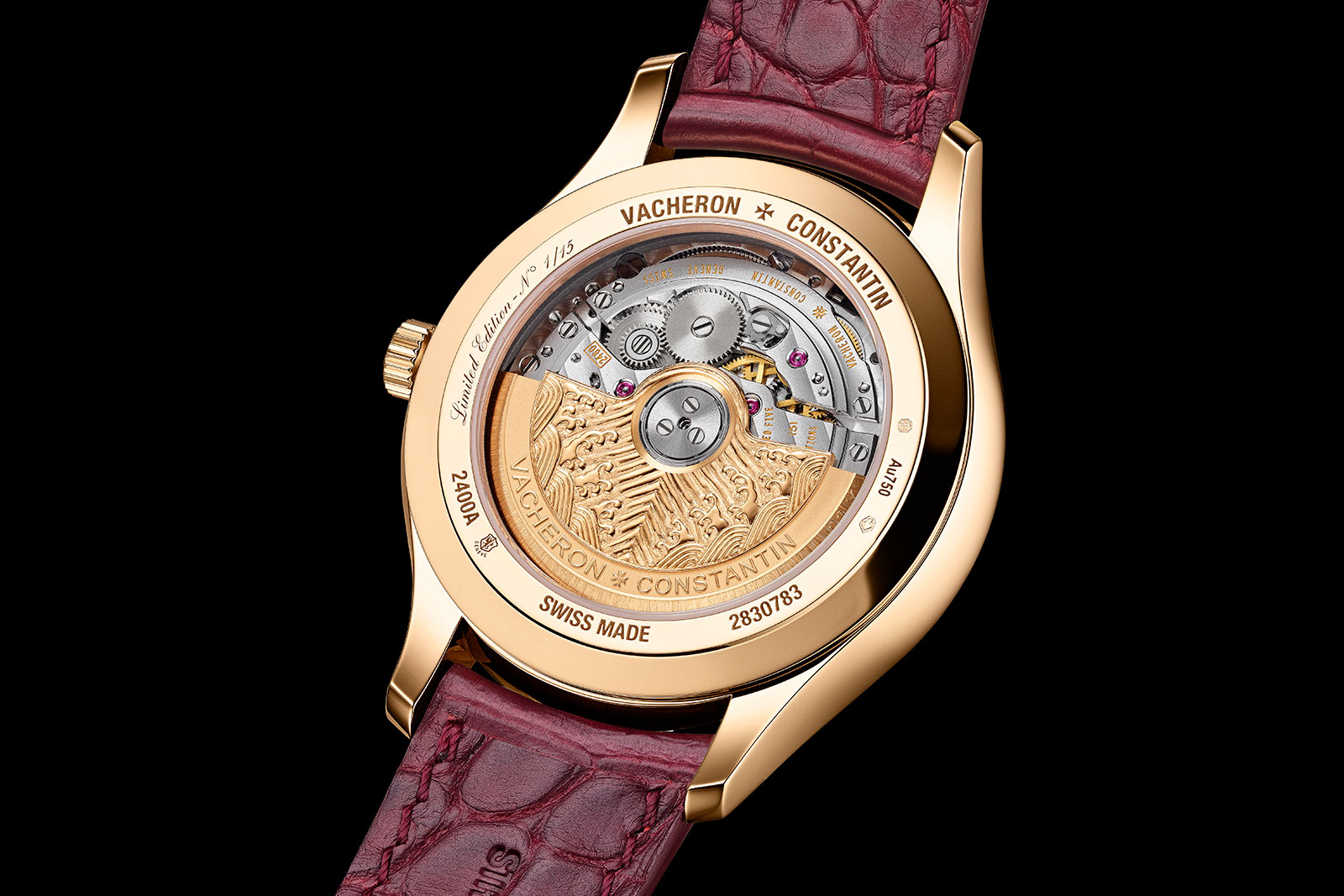
The cal. 2460
Key facts and price
Vacheron Constantin Métiers d’Art Tribute to Traditional Symbols “Eternal Flow” and “Moonlight Slivers”
Ref. 2400A/000R-H024 (Eternal Flow pink gold)
Ref. 2400A/000G-H023 (Eternal Flow white gold)
Ref. 2405A/000R-H022 (Moonlight Slivers pink gold)
Ref. 2405A/000G-H021 (Moonlight Slivers white gold)
Diameter: 38 mm
Height: 9.88 mm
Material: 18k pink or white gold (Moonlight Slivers set with 74 brilliant-cut diamonds on bezel)
Crystal: Sapphire
Water resistance: 30 m
Movement: Cal. 2460
Functions: Hours and minutes
Winding: Self-winding
Frequency: 28,800 beats per hour (4 Hz)
Power reserve: 40 hours
Strap: Alligator leather strap with folding buckle
Limited edition: 15 pieces each
Availability: Now at Vacheron Constantin boutiques only
Price: Price on request
For more information, visit Vacheron-constantin.com.
Update August 14, 2024: Added link to interview with Song Hanyang.
Back to top.


